

The Battle of Tours - A Decisive Fight for Europe’s Future
- Read Later
The early medieval world of our ancestors was built upon struggles and decisive battles. The emerging nations united the broken tribes, expanded their borders, conquered their enemies, and often enough - fended off invaders. But rare are the battles that really left a long lasting impact that echoed through the generations that followed.
Rare are such conflicts that changed the history of the world with their importance and decided the future of us all for centuries to come. And one of those rare, world-changing battles is the Battle of Tours - fought in 732 AD between the Christian Frankish forces and the invading Muslim Umayyad Caliphate.
This fierce and destructive conflict, that shaped the future of Europe and echoed through time, was a great gamble, fought against all odds. But it remains as one of the biggest lessons of Europe’s past, and today we are going in detail about that fated day in 732.
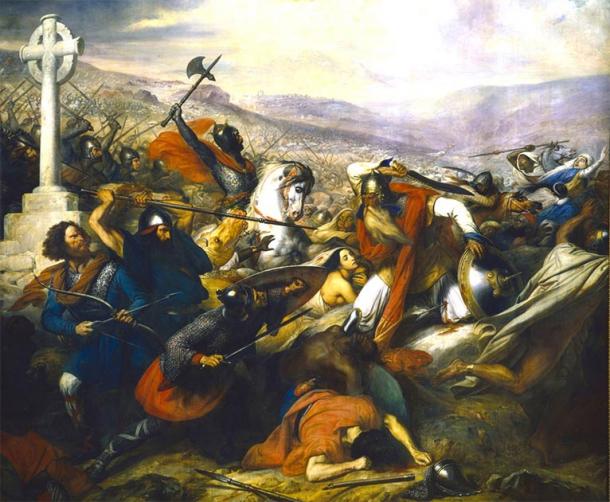
A triumphant Charles Martel (mounted) faces Abdul Rahman Al Ghafiqi (right) at the Battle of Tours. Source: Bender235 / Public Domain .
The Prelude to the Battle of Tours
Around the very beginning of the 8 th century, in the year 700 AD, the Muslim Umayyad Caliphate was rapidly spreading its empire around the world. It was the second of the four great caliphates that emerged after the death of Muhammad and was one of the largest empires of the world at the time.
After conquering the lands of North Africa, they saw mainland Europe as the next prey for their conquests. From the shores of North Africa, they had a clear passage - in the form of the Gibraltar Strait. This would allow their forces to cross over onto the Iberian Peninsula , from which they would spread further inland.
At the time, Iberia was under the control of the Visigothic Kingdom, a centralized state under the rule of King Roderic. Nonetheless, the Umayyads crossed the strait in the year 711 AD, under the leadership of one Tariq ibn Ziyad, and soon after clashed with the Visigothic army in the Battle of Guadalete, in the same year, in the very south of Iberia.
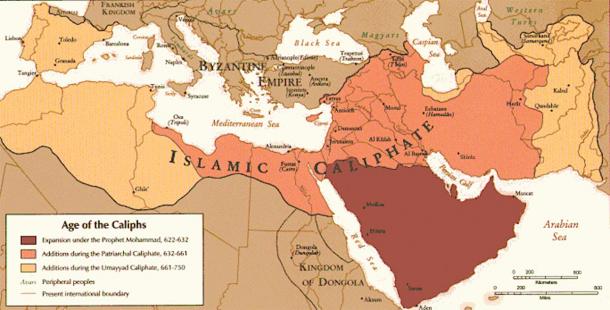
The "Age of the Caliphs", shows the Umayyad dominance stretched from the Middle East to the Iberian Peninsula, including the port of Narbonne, c. 720. (McZusatz / Public Domain )
At the time of the Umayyad invasion, King Roderic was far in the north, attempting to fight a Basque rebellion. This unfortunately placed him in a bad situation, as he was forced to a long march south, to face this much bigger enemy. In the end, the Visigoths were defeated in the face of the overwhelming Muslim cavalry.
In the battle, King Roderic and most of the nobles of his kingdom lost their lives, which allowed the Umayyads to effectively conquer Iberia, step by step. This they managed in just a little under seven years. And once Iberia was theirs, Frankish Gaul was just a step away.
The only thing that divided the Umayyads from their prey - the Frankish Kingdom - were the Pyrenees Mountains . This was a fitting natural barrier - but it was in no way untraversable. In time, the Umayyads began crossing over and making incursions into the very south of Gaul. By 720 they conquered the southern province of Septimania.
In the following year, they focused on the large city to the immediate west, Toulouse, which they besieged. This siege was brought to an end by the prominent Frankish Duke Odo - who managed to overwhelm the Umayyad forces outside Toulouse and defeat them. Nonetheless, large numbers of Umayyads kept crossing over the Pyrenees and laying waste to the southern provinces of Gaul.
The Duchy of Aquitaine laid in the south and faced the brunt of this invasion. Its largest towns, Bordeaux and Toulouse were ravaged, and in no time the invaders reached even the Duchy of Burgundy to its north.
But it wasn’t until 732 that the Umayyad Caliphate truly amassed its forces with proper conquering intentions and adequate strength. The man that was at the head of this force was Abdul Rahman al Ghafiqi, the then-Governor General of Muslim Iberia. He led his forces across the Pyrenees once again and plundered the land and all the cities he came across.
- Unique Iberian Male DNA was Practically Wiped Out by Immigrant Farmers 4500 Years Ago [New Study]
- Raiders of Hispania: Unravelling the Secrets of the Suebi
- Was the First Islamic Siege of Constantinople (674 – 678 AD) a Historical Misnomer?
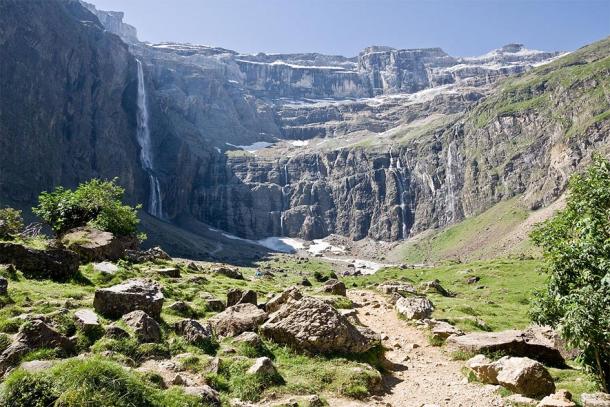
Abdul Rahman al Ghafiqi led his troops over the Pyrenees Mountains toward the Battle of Tours. (Jean-Christophe BENOIST / CC BY-SA 3.0 )
The Umayyads greatly coveted riches, and their main activity during this conquest was plunder. After completely ransacking Bordeaux once again, the Umayyad forces faced Duke Odo once more. Odo led his army in an attempt to stop the invasion as he did a few years before.
But this time, he was terribly outnumbered and outmaneuvered, and his forces were crushed. Realizing the gravity of the situation, and that his own lands of Aquitaine were overrun, Odo fled to the north seeking assistance from the de-facto ruler of the Frankish Kingdom - Charles Martel.
Before the Umayyad invasion Odo and Charles were enemies. Charles sought to expand his lordship over Aquitaine and Odo saw the Franks as invaders. But with this new and much greater threat, Odo had no choice but to seek help from the Franks. Charles Martel agreed to join up with him, but the “price” was Odo’s acceptance of Frankish overlordship. Odo agreed.
The Hammer Enters the Fray
Charles Martel was a seasoned ruler and a battle hardened veteran. His troops were equally experienced having been in constant clashes along the eastern borders of their kingdom, fighting neighboring tribes.
Charles also understood how important the situation was and began gathering his levies from all over the north. And he would show his shrewdness as a battle commander, when he carefully understood the intentions of his enemy.
Meanwhile, the Umayyad forces moved slowly across the Frankish lands, their forces spread into war parties that ravaged the countryside and amassed an enormous amount of plunder. This “greedy” focus on war booty would greatly influence their future undoing. They had to take their time, as they greatly depended on the crop season for their food source.
But their destination was clear to Charles Martel. It was the rich city of Tours - prominent and wealthy, filled with abbeys of great importance. Thus, Charles placed his Frankish forces directly on the path of the coming Umayyads. He situated his army roughly in between the city of Tours and the ravaged town of Poitiers further south.
The Franks were placed close to the confluence of rivers Clain and Vienne, on a slightly elevated and forested hill. Charles Martel deliberately and shrewdly chose this position. First of all - he was outnumbered and knew it.
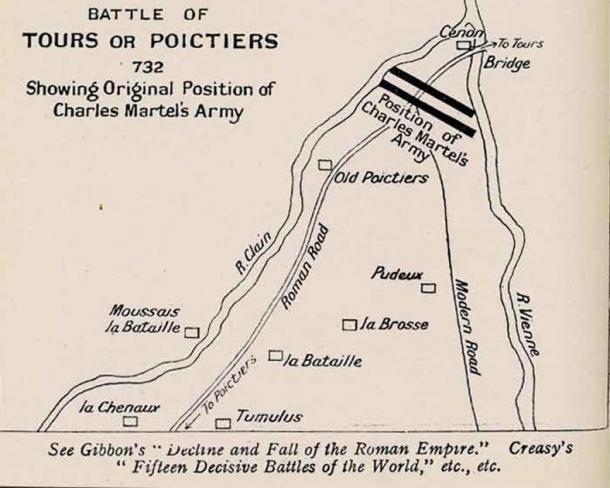
Map of the Battle of Tours with the position of Charles Martel's army. (Evzen M / Public Domain )
Thus he chose the cover of the forest to displace his troops and hide his number in hope to not reveal his disadvantage. Secondly - he chose a place where the Umayyads would have to enter into battle, as the only crossing over the rivers was behind the Frankish forces. Thirdly - the forest protected his troops - mainly the second lines - from the full brunt of a cavalry charge, and somewhat protected his sides from flanking attacks.
When the Umayyads approached the assembled Christian army, their leader Abdul Rahman al Ghafiqi - also a seasoned commander - knew that Charles Martel took the upper hand, by choosing his preferred place of battle. Even so, al Ghafiqi trusted in his strength and deployed for battle.
One thing he must have noticed is the difference in the troops - Umayyads relied heavily on cavalry, while the Franks were mostly footmen. But he failed to take several things into account.
The Muslim cavalry was lightly armored - they preferred to adorn themselves with chainmail and not much else in terms of armor. Riches and trinkets were much more to their liking.
They also rode willful Arabic horses, which were difficult to break in, and thus not the truly perfect cavalry mounts. Some historians also mention that this cavalry was in large part armed with spears - which were unseasoned and would break on first impact.
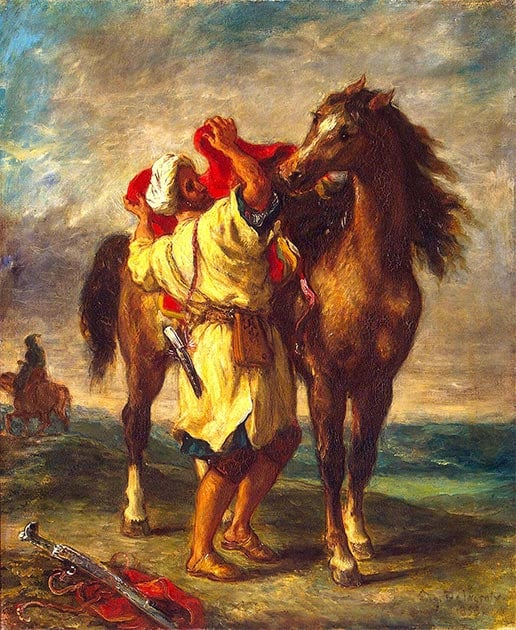
The Muslim cavalry rode willful Arabic horses during the Battle of Tours. (Trzęsacz / Public Domain )
On the other hand, the Frankish infantry was thoroughly seasoned. Most of the army were veterans, with only a small part of fresh recruits reserved in the second lines. They were well armored for the time, and well-armed as well. They stood packed in tight lines and ready for a cavalry charge.
But the battle did not begin immediately. The opposing forces “tested the waters”, with sporadic small skirmishes going on for seven days.
This was in truth a deliberate stalling from al Ghafiqi, who waited for his whole army to assemble fully. In the end, with the Umayyads fearing the approaching winter, they commenced battle on the seventh day - on the 10th of October 732 AD.
The Umayyad Wave That Broke On the Frankish Rock
The Umayyad commander, al Ghafiqi, heavily relied on his cavalry, even though he didn’t possess much knowledge about the assembled enemy. He sent waves of cavalry charges in an attempt to break the Frankish lines - but this did not happen. The seasoned Franks were tightly packed - shoulder to shoulder - and withstood all assaults.
The rare combination of slight elevation, good arms and armor, and tree cover allowed them to hold their ground - when it was almost impossible for infantry to hold against cavalry in medieval times. Even when some small parts of the line faltered and broke under the cavalry, the fresh second lines were quick to react - sealing the gap.
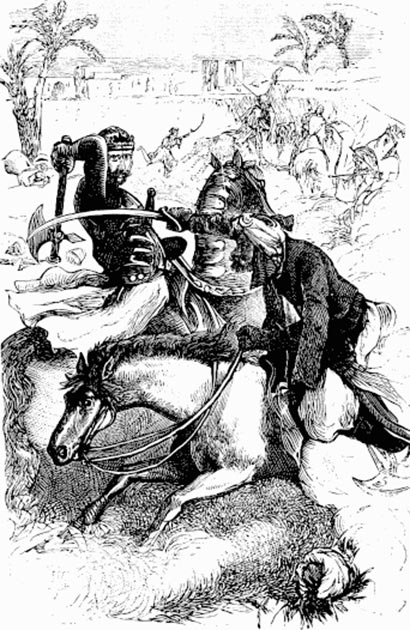
Frankish knight fighting against an Umayyad horseman. (Helix84 / Public Domain )
As the battle went on in that way, Duke Odo commenced a crucial flanking operation that greatly tipped the scales in Frankish favor. He gathered a cavalry force and flanked wide - reaching the distant Muslim encampment - i.e. their rear. This was where the Umayyad tents were and all of their abundant plunder.
Odo managed to inflict great losses here, retrieve the precious plunder, free around 200 captive Franks, and draw the eye of the enemy. But what happened next was more than he hoped for. Upon realizing that their camp and their plunder were under attack, many Umayyad units from the central battlefield rushed back in a frenzy to save their loot.
This was an unprecedented situation, one that al Ghafiqi never expected. His attempts at rallying his troops were in vain, and Charles Martel - who knew exactly what he was doing - seized this opportunity.
As the Umayyad forces dissipated to retrieve the loot, he swung his forces from left, right, and center, and engaged in both pursuit and encirclement. The remaining body of the Umayyads was surrounded and suffered immense casualties.
The chief of these was al Ghafiqi himself - who fell in battle while attempting to rally his troops. Meanwhile, Duke Odo swung north again and cut off the fleeing Umayyads, inflicting great losses. In effect, the Umayyad forces fled.
- The Heroic Story of Roland: A Valiant Knight With an Unbreakable Sword
- Cataphracts: Armored Warriors and their Horses of War
- The Mighty Magyars, a Medieval Menace to the Holy Roman Empire
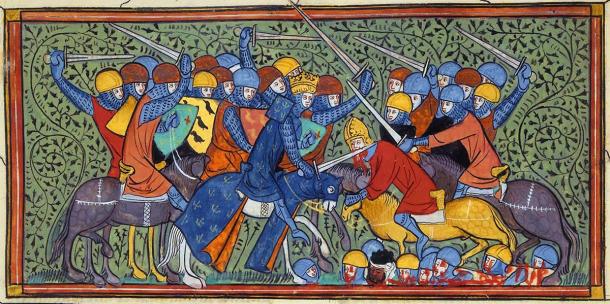
Charles Martel gathered his cavalry at Battle of Tours and attacked the Umayyad encampment. (Levan Ramishvili / Public Domain )
Now, Charles Martel expected a second day of battles and remained in his position, treating the wounded and re-organizing. But another day never came. The Umayyads, with their commander dead, could not successfully organize another attack or choose a fitting leader. They had suffered great losses as well.
Charles Martel feared an ambush and would not descend from the hill at any cost. Eventually, he sent out extensive reconnaissance parties to survey the Umayyad forces - but only to learn that there were none. They had gathered all the remaining plunder they could and fled during the night - extremely hastily. They had returned to Iberia.
Charles Martel won a crushing and glorious victory that cemented his reputation of a noble and capable leader. He was praised all across Europe as the savior of the Christendom and the “Hammer that Broke the Muslims”. Thus he earned his nickname - Martel - meaning Charles the Hammer.
He subsequently expanded his rule over Aquitaine and successfully isolated the invaders to the southern region of Septimania, where they remained for another 27 years and were completely unable to break through. Charles’ wealth, influence, power, and ability led to the emergence of the Carolingian dynasty , which would rise and last for centuries to follow.
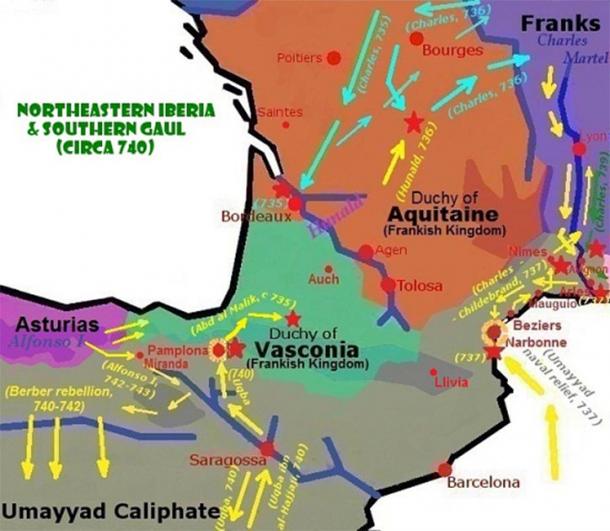
Charles Martel's military campaigns in Aquitaine, Septimania, and Provence after the Battle of Tour-Poitiers (734–742). (Iñaki LLM / CC BY-SA 3.0 )
Changing the Future of the World
The Europe of the early 18 th century desperately needed a capable and strong commander that would stop the Muslim Umayyad invaders dead in their tracks. And that commander was Charles Martel. He stood up to ravaging flood of conquerors and using his superior tactics, shrewdness, and reputation, he managed to win a crushing battle - against all odds. Like a beacon that kept burning throughout a storm, his Frankish warriors defied their enemy in battle. And it is this battle that changed the course of European history, and with that - the history of the World.
Top image: Medieval soldier at war. Credit: Andrey Kiselev / Adobe Stock
By Aleksa Vučković
Creasy, E. 2016. The Fifteen Decisive Battles of the World . Enhanced Media.
Neiberg, M. 2003. Warfare in World History . Taylor & Francis.
Scott, J. 2011. Battle of Tours - A New Look at an Old Enemy . eBookIt.

I am a published author of over ten historical fiction novels, and I specialize in Slavic linguistics. Always pursuing my passions for writing, history and literature, I strive to deliver a thrilling and captivating read that touches upon history's most... Read More
Related Articles on Ancient-Origins
Muslim Invasions of Western Europe: The 732 Battle of Tours
- Battles & Wars
- Key Figures
- Arms & Weapons
- Naval Battles & Warships
- Aerial Battles & Aircraft
- French Revolution
- Vietnam War
- World War I
- World War II
- American History
- African American History
- African History
- Ancient History and Culture
- Asian History
- European History
- Latin American History
- Medieval & Renaissance History
- The 20th Century
- Women's History
:max_bytes(150000):strip_icc():format(webp)/khickman-5b6c7044c9e77c005075339c.jpg)
- M.A., History, University of Delaware
- M.S., Information and Library Science, Drexel University
- B.A., History and Political Science, Pennsylvania State University
The Battle of Tours was fought during the Muslim invasions of Western Europe in the 8th century.
Armies & Commanders at the Battle of Tours
- Charles Martel
- 20,000-30,000 men
- Abdul Rahman Al Ghafiqi
- unknown, but perhaps as high as 80,000 men
Battle of Tours - Date
Martel's triumph at the Battle of Tours occurred on October 10, 732.
Background on the Battle of Tours
In 711, the forces of the Umayyad Caliphate crossed into the Iberian Peninsula from Northern Africa and quickly began overrunning the region's Visigothic Christian kingdoms. Consolidating their position on the peninsula, they used the area as a platform for commencing raids over the Pyrenees into modern-day France. Initially meeting little resistance, they were able to gain a foothold and the forces of Al-Samh ibn Malik established their capital at Narbonne in 720. Commencing attacks against Aquitaine, they were checked at the Battle of Toulouse in 721. This saw Duke Odo defeat the Muslim invaders and kill Al-Samh. Retreating to Narbonne, Umayyad troops continued raiding west and north reached as far as Autun, Burgundy in 725.
In 732, Umayyad forces led by the governor of Al-Andalus, Abdul Rahman Al Ghafiqi, advanced in force into Aquitaine. Meeting Odo at the Battle of the River Garonne they won a decisive victory and commenced sacking the region. Fleeing north, Odo sought aid from the Franks. Coming before Charles Martel, the Frankish mayor of the palace, Odo was promised aid only if he promised to submit to the Franks. Agreeing, Martel began raising his army to meet the invaders. In the years previous, having assessed the situation in Iberia and the Umayyad attack on Aquitaine , Charles came to believe that a professional army, rather than raw conscripts, was needed to defend the realm from invasion. To raise the money necessary to build and train an army that could withstand the Muslim horsemen, Charles began seizing Church lands, earning the ire of the religious community.
Battle of Tours - Moving to Contact
Moving to intercept Abdul Rahman, Charles used secondary roads to avoid detection and allow him to select the battlefield. Marching with approximately 30,000 Frankish troops he assumed a position between the towns of Tours and Poitiers. For the battle, Charles selected a high, wooded plain which would force the Umayyad cavalry to charge uphill through unfavorable terrain. This included trees in front of the Frankish line which would aid in breaking up cavalry attacks. Forming a large square, his men surprised Abdul Rahman, who did not expect to encounter a large enemy army and forced the Umayyad emir to pause for a week to consider his options. This delay benefited Charles as it allowed him to summon more of his veteran infantry to Tours.
Battle of Tours - The Franks Stand Strong
As Charles reinforced, the increasingly cold weather began to prey on the Umayyads who were unprepared for the more northern climate. On the seventh day, after gathering all of his forces, Abdul Rahman attacked with his Berber and Arab cavalry. In one of the few instances where medieval infantry stood up to cavalry, Charles' troops defeated repeated Umayyad attacks. As the battle waged, the Umayyads finally broke through the Frankish lines and attempted to kill Charles. He was promptly surrounded by his personal guard who repulsed the attack. As this was occurring, scouts that Charles had sent out earlier were infiltrating the Umayyad camp and freeing prisoners and enslaved people.
Believing that the plunder of the campaign was being stolen, a large part of the Umayyad army broke off the battle and raced to protect their camp. This departure appeared as a retreat to their comrades who soon began to flee the field. While attempting to stop the apparent retreat, Abdul Rahman was surrounded and killed by Frankish troops. Briefly pursued by the Franks, the Umayyad withdrawal turned into a full retreat. Charles re-formed his troops expecting another attack the next day, but to his surprise, it never came as the Umayyads continued their retreat all the way to Iberia.
While exact casualties for the Battle of Tours are not known, some chronicles relate that Christian losses numbered around 1,500 while Abdul Rahman suffered approximately 10,000. Since Martel's victory, historians have argued over the battle's significance with some stating that his victory saved Western Christendom while others feel that its repercussions were minimal. Regardless, the Frankish victory at Tours, along with subsequent campaigns in 736 and 739, effectively stopped the advance of Muslim forces from Iberia allowing the further development of the Christian states in Western Europe.
- Battle of Tours: 732
- Decisive Battles: Battle of Tours
- Battle of Tours: Primary Sources
- Biography of Charles Martel, Frankish Military Leader and Ruler
- What Was the Umayyad Caliphate?
- Second Punic War: Battle of the Trebia
- Hundred Years' War: Battle of Poitiers
- The Crusades: Battle of Hattin
- Invasions of England: Battle of Hastings
- What Effect Did the Crusades Have on the Middle East?
- Teutonic War: Battle of Grunwald (Tannenberg)
- Charlemagne: Battle of Roncevaux Pass
- Key Events in French History
- Mongol Invasions: Battle of Legnica
- Muslim Empire: Battle of Siffin
- Indian Wars: Lt. Colonel George A. Custer
- Roman Empire: Battle of the Milvian Bridge
- Napoleonic Wars: Battle of Austerlitz
- Little-Known Asian Battles That Changed History

Sign Up Today
Start your 14 day free trial today

The History Hit Miscellany of Facts, Figures and Fascinating Finds
Battle of Tours: Its Significance and Historical Implications

Celeste Neill
01 oct 2018.
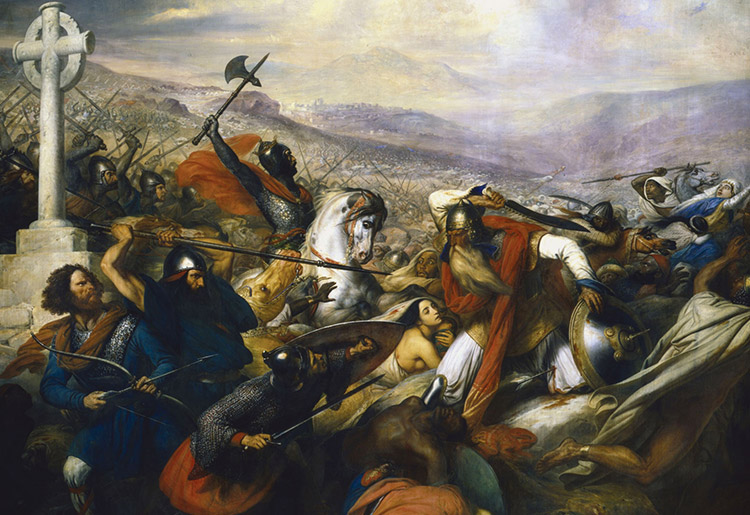
On 10 October 732 Frankish General Charles Martel crushed an invading Muslim army at Tours in France , decisively halting the Islamic advance into Europe.
The Islamic advance
After the death of the Prophet Muhammed in 632 AD the speed of the spread of Islam was extraordinary, and by 711 Islamic armies were poised to invade Spain from North Africa. Defeating the Visigothic kingdom of Spain was a prelude to increasing raids into Gaul, or modern France, and in 725 Islamic armies reached as far north as the Vosgues mountains near the modern border with Germany .
Opposing them was the Merovingian Frankish kingdom , perhaps the foremost power in western Europe. However given the seemingly unstoppable nature of the Islamic advance into the lands of the old Roman Empire further Christian defeats seemed almost inevitable.
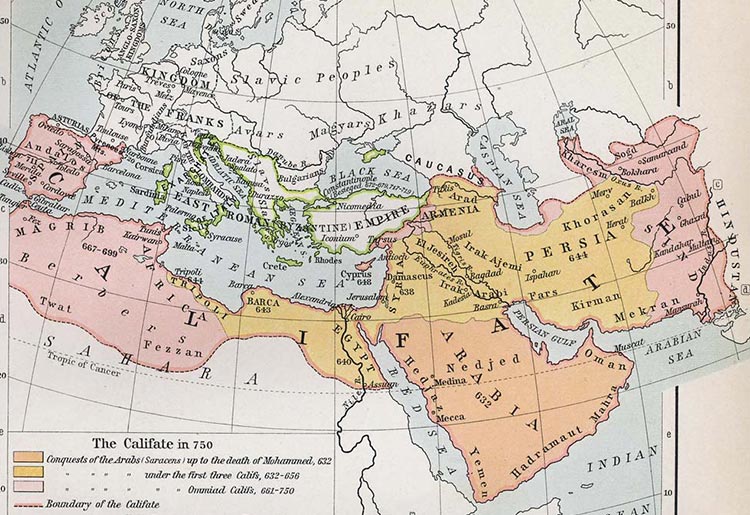
Map of the Umayyad Caliphate in 750 AD. Image credit: Public Domain, via Wikimedia Commons
In 731 Abd al-Rahman, a Muslim warlord north of the Pyrenees who answered to his distant Sultan in Damascus, received reinforcements from North Africa. The Muslims were preparing for a major campaign into Gaul.
The campaign commenced with an invasion of the southern kingdom of Aquitaine, and after defeating the Aquitanians in battle Abd al-Rahman’s army burned their capital of Bordeaux in June 732. The defeated Aquitanian ruler Eudes fled north to the Frankish kingdom with the remnants of his forces in order to plead for help from a fellow Christian, but old enemy: Charles Martel .
Martel’s name meant “the hammer” and he had already many successful campaigns in the name of his lord Thierry IV, mainly against other Christians such as the unfortunate Eudes, who he met somewhere near Paris . Following this meeting Martel ordered a ban , or general summons, as he prepared the Franks for war.
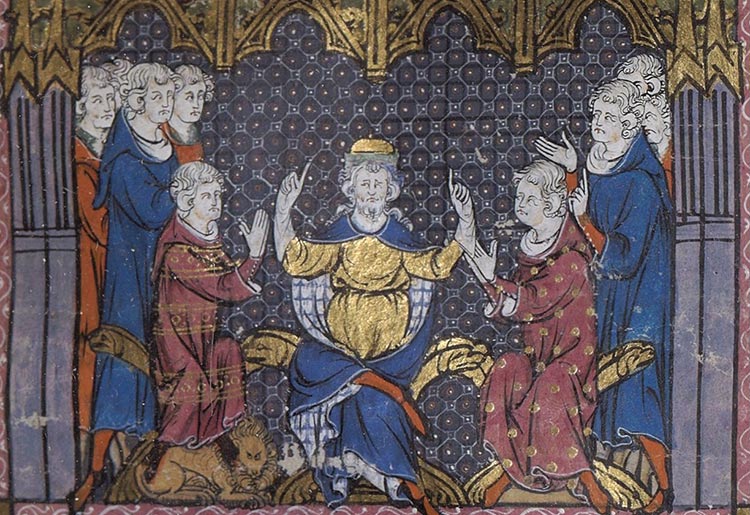
14th century depiction of Charles Martel (middle). Image credit: Public Domain, via Wikimedia Commons
The Battle of Tours
Once his army had gathered, he marched to the fortified city of Tours, on the border with Aquitaine, to await the Muslim advance. After three months of pillaging Aquitaine, al-Rahman obliged.
His army outnumbered that of Martel but the Frank had a solid core of experienced armoured heavy infantry who he could rely upon to withstand a Muslim cavalry charge.
With both armies unwilling to enter the bloody business of a Medieval battle but the Muslims desperate to pillage the rich cathedral outside the walls of Tours, an uneasy standoff prevailed for seven days before the battle finally began. With winter coming al-Rahman knew that he had to attack.
The battle began with thundering cavalry charges from Rahman’s army but, unusually for a Medieval battle, Martel’s excellent infantry weathered the onslaught and retained their formation. Meanwhile, Prince Eudes’ Aquitanian cavalry used superior local knowledge to outflank the Muslim armies and attack their camp from the rear.
Christian sources then claim that this caused many Muslim soldiers to panic and attempt to flee to save their loot from the campaign. This trickle became a full retreat, and the sources of both sides confirm that al-Rahman died fighting bravely whilst trying to rally his men in the fortified camp.

The battle then ceased for the night, but with much of the Muslim army still at large Martel was cautious about a possible feigned retreat to lure him out into being smashed by the Islamic cavalry. However, searching the hastily abandoned camp and surrounding area revealed that the Muslims had fled south with their loot. The Franks had won.
Despite the deaths of al-Rahman and an estimated 25,000 others at Tours, this war was not over. A second equally dangerous raid into Gaul in 735 took four years to repulse, and the reconquest of Christian territories beyond the Pyrenees would not begin until the reign of Martel’s celebrated grandson Charlemagne.
Martel would later found the famous Carolingian dynasty in Frankia, which would one day extend to most of western Europe and spread Christianity into the east.
Tours was a hugely important moment in the history of Europe, for though the battle of itself was perhaps not as seismic as some have claimed, it stemmed the tide of Islamic advance and showed the European heirs of Rome that these foreign invaders could be defeated.
You May Also Like
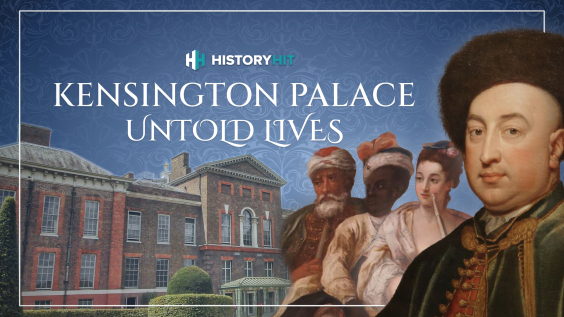
Mac and Cheese in 1736? The Stories of Kensington Palace’s Servants
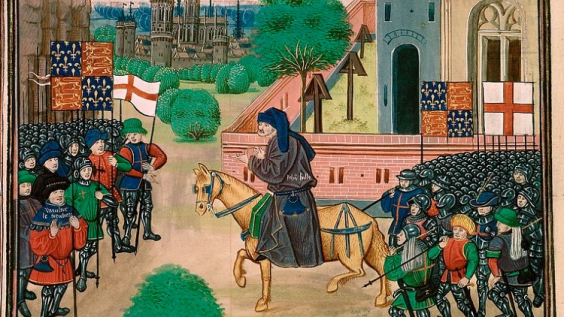
The Peasants’ Revolt: Rise of the Rebels
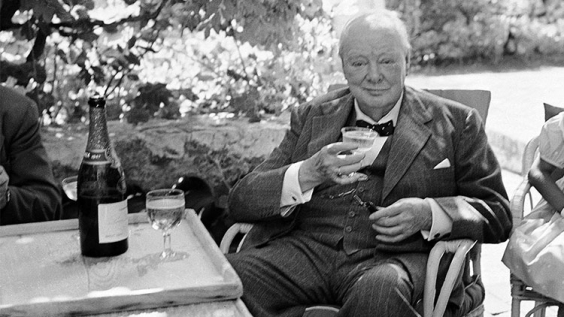
10 Myths About Winston Churchill
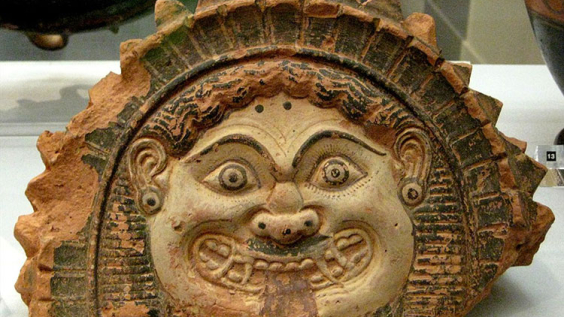
Medusa: What Was a Gorgon?
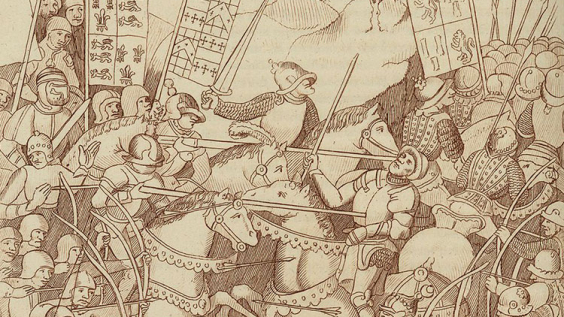
10 Facts About the Battle of Shrewsbury
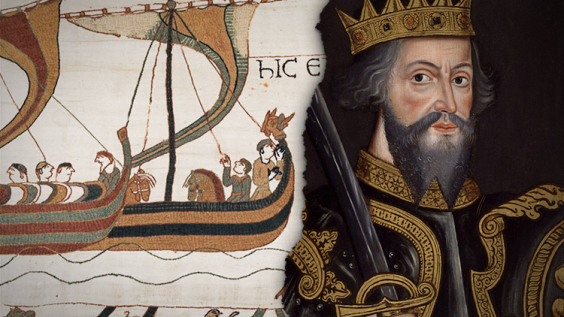
5 of Our Top Podcasts About the Norman Conquest of 1066
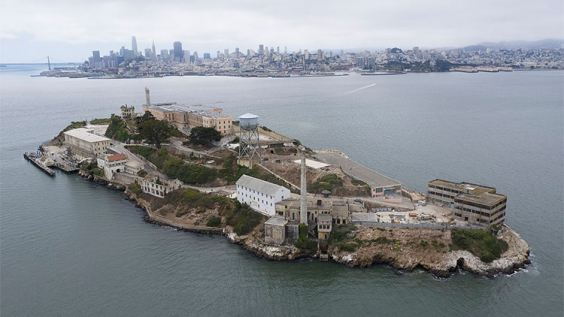
How Did 3 People Seemingly Escape From Alcatraz?
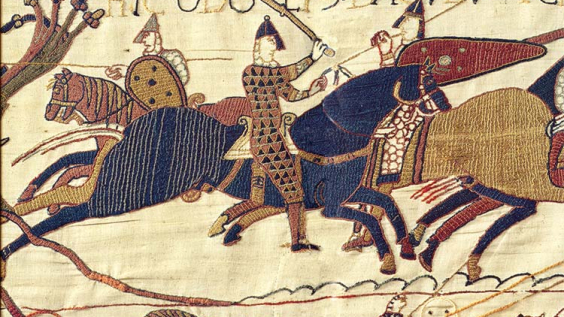
5 of Our Top Documentaries About the Norman Conquest of 1066
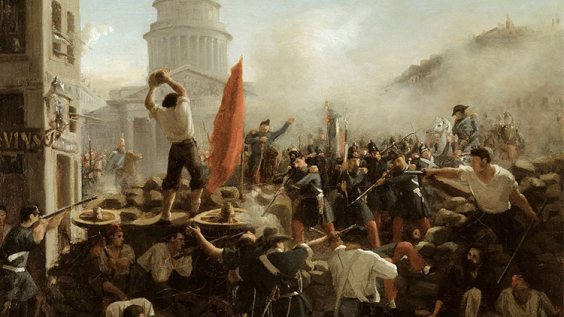
1848: The Year of Revolutions
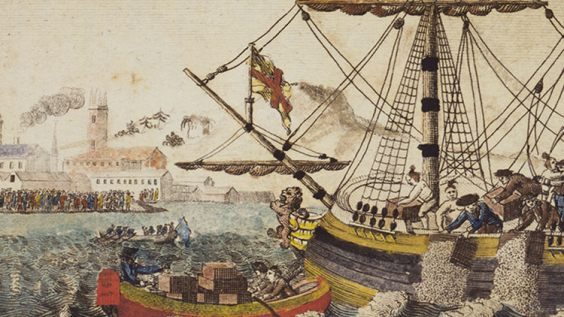

What Prompted the Boston Tea Party?
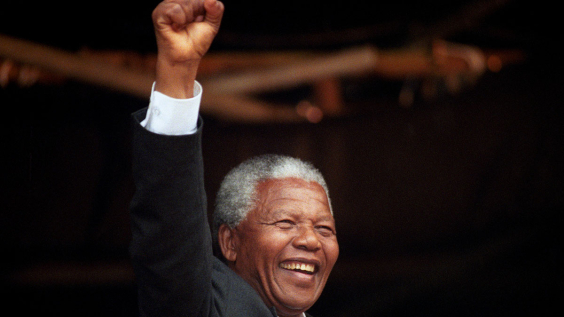
15 Quotes by Nelson Mandela

The History of Advent

Battle of Tours
Frankish victory over the umayyad caliphate, 732 / from wikipedia, the free encyclopedia, dear wikiwand ai, let's keep it short by simply answering these key questions:.
Can you list the top facts and stats about Battle of Tours?
Summarize this article for a 10 year old
The Battle of Tours , [6] also called the Battle of Poitiers and the Battle of the Highway of the Martyrs ( Arabic : معركة بلاط الشهداء , romanized : Maʿrakat Balāṭ ash-Shuhadā' ), [7] was fought on 10 October 732, and was an important battle during the Umayyad invasion of Gaul . It resulted in the victory for the Frankish and Aquitanian forces, [8] [9] led by Charles Martel , over the invading Muslim forces of the Umayyad Caliphate , led by Abd al-Rahman al-Ghafiqi , governor of al-Andalus . Several historians, such as Edward Gibbon , have credited the Christian victory in the battle as an important factor in curtailing the Islamization of Western Europe . [10]
Kingdom of the Franks ( Western Franks ) [5]
- Vascones [5]
- Charles Martel [5]
- Odo, Duke of Aquitaine [5]
Details of the battle, including the number of combatants and its exact location, are unclear from the surviving sources. Most sources agree that the Umayyads had a larger force and suffered heavier casualties. Notably, the Frankish troops apparently fought without heavy cavalry . [11] The battlefield was located somewhere between the cities of Poitiers and Tours , in northern Aquitaine in western France, near the border of the Frankish realm and the then-independent Duchy of Aquitaine under Odo the Great .
Al-Ghafiqi was killed in combat, and the Umayyad army withdrew after the battle. The battle helped lay the foundations of the Carolingian Empire and Frankish domination of western Europe for the next century. Most historians agree that "the establishment of Frankish power in western Europe shaped that continent's destiny and the Battle of Tours confirmed that power." [12]

The Umayyad Caliphate
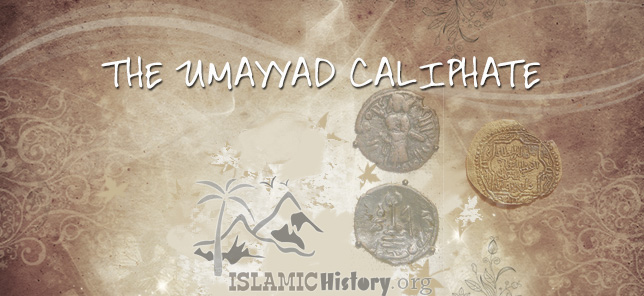
The Umayads were the first Muslim dynasty — that is, they were the first rulers of the Islamic Empire to pass down power within their family.
According to tradition, the Umayyad family (also known as the Banu Abd-Shams) and Muhammad [saw] both descended from a common ancestor, Abd Manaf ibn Qusai, and they originally came from the city of Mecca . Muhammad [saw] descended from Abd Manāf via his son Hashim, while the Umayyads descended from Abd Manaf via a different son, Abd-Shams, whose son was Umayya. The two families are therefore considered to be different clans (those of Hashim and of Umayya, respectively) of the same tribe (that of the Quraish).
The shift in power to Damascus, the Umayyad capital city, was to have profound effects on the development of Islamic history. For one thing, it was a tacit recognition of the end of an era. The first four caliphs had been without exception Companions of the Prophet – pious, sincere men who had lived no differently from their neighbors and who preserved the simple habits of their ancestors despite the massive influx of wealth from the conquered territories. Even ‘Uthman, whose policies had such a divisive effect, was essentially dedicated more to the concerns of the next world than of this. With the shift to Damascus much was changed.
In the early days of Islam , the extension of Islamic rule had been based on an uncomplicated desire to spread the Word of God. Although the Muslims used force when they met resistance they did not compel their enemies to accept Islam. On the contrary, the Muslims permitted Christians and Jews to practice their own faith and numerous conversions to Islam were the result of exposure to a faith that was simple and inspiring.
With the advent of the Umayyads, how ever, secular concerns and the problems inherent in the administration of what, by then, was a large empire began to dominate the attention of the caliphs, often at the expense of religious concerns – a development that disturbed many devout Muslims. This is not to say that religious values were ignored; on the contrary, they grew in strength for centuries. But they were not always at the forefront and from the time of Mu’awiyah the caliph’s role as “Defender of the Faith” increasingly required him to devote attention to the purely secular concerns which dominate so much of every nation’s history. Muiawiyah was an able administrator, and even his critics concede that he possessed to a high degree the much-valued quality of hilm – a quality which may be defined as “civilized restraint” and which he himself once described in these words:
I apply not my sword where my lash suffices, nor my lash where my tongue is enough. And even if there be one hair binding me to my fellowmen, I do not let it break: when they pull I loosen, and if they loosen I pull.
Nevertheless, Mu’awiyah was never able to reconcile the opposition to his rule nor solve the conflict with the Shi’is. These problems were not unmanageable while Mu’awiyah was alive, but after he died in 680 the partisans of ‘Ali resumed a complicated but persistent struggle that plagued the Umayyads at home for most of the next seventy years and in time spread into North Africa and Spain.
The Umayyads, however, did manage to achieve a degree of stability, particularly after ‘Abd al-Malik ibn Marwan succeeded to the caliphate in 685. Like the Umayyads who preceded him, ‘Abd al-Malik was forced to devote a substantial part of his reign to political problems. But he also introduced much needed reforms. He directed the cleaning and reopening of the canals that irrigated the Tigris-Euphrates Valley – a key to the prosperity of Mesopotamia since the time of the Sumerians – introduced the use of the Indian water buffalo in the riverine marshes, and minted a standard coinage which replaced the Byzantine and Sassanid coins, until then the sole currencies in circulation. ‘Abd al-Malik’s organization of government agencies was also important; it established a model for the later elaborate bureaucracies of the ‘Abbasids and their successor states. There were specific agencies charged with keeping pay records; others concerned themselves with the collection of taxes. ‘Abd al-Malik established a system of postal routes to expedite his communications throughout the far flung empire. Most important of all, he introduced Arabic as the language of administration, replacing Greek and Pahlavi. Under ‘Abd al-Malik, the Umayyads expanded Islamic power still further. To the east they extended their influence into Transoxania, an area north of the Oxus River in today’s Soviet Union, and went on to reach the borders of China. To the west, they took North Africa, in a continuation of the campaign led by ‘Uqbah ibn Nafi’ who founded the city of Kairouan – in what is now Tunisia – and from there rode all the way to the shores of the Atlantic Ocean. These territorial acquisitions brought the Arabs into contact with previously unknown ethnic groups who embraced Islam and would later influence the course of Islamic history. The Berbers of North Africa, for example, who resisted Arab rule but willingly embraced Islam, later joined Musa ibn Nusayr and his general, Tariq ibn Ziyad, when they crossed the Strait of Gibraltar to Spain. The Berbers later also launched reform movements in North Africa which greatly influenced the Islamic civilization. In the East, Umayyad rule in Transoxania brought the Arabs into contact with the Turks who, like the Berbers, embraced Islam and, in the course of time, became its staunch defenders. Umayyad expansion also reached the ancient civilization of India, whose literature and science greatly enriched Islamic culture.
In Europe, meanwhile, the Arabs had passed into Spain, defeated the Visigoths, and by 713 had reached Narbonne in France. In the next decades, raiding parties continually made forays into France and in 732 reached as far as the Loire Valley, only 170 miles from Paris. There, at the Battle of Tours, or Poitiers, the Arabs were finally turned back by Charles Martel. One of the Umayyad caliphs who attained greatness was ‘Umar ibn ‘Abd al-‘Aziz, a man very different from his predecessors. Although a member of the Umayyad family, ‘Umar had been born and raised in Medina, where his early contact with devout men had given him a concern for spiritual as well as political values. The criticisms that religious men in Medina and elsewhere had voiced of Umayyad policy – particularly the pursuit of worldly goals – were not lost on ‘Umar who, reversing the policy of his predecessors, discontinued the levy of a poll tax on converts. This move reduced state income substantially, but as there was a clear precedent in the practice of the great ‘Umar ibn al-Khattab, the second caliph, and as ‘Umar ibn ‘Abd al-‘Aziz was determined to bring government policy more in line with the practice of the Prophet, even enemies of his regime had nothing but praise for this pious man. The last great Umayyad caliph was Hisham, the fourth son of ‘Abd al-Malik to succeed to the caliphate. His reign was long – from 724 to 743 – and during it the Arab empire reached its greatest extent. But neither he nor the four caliphs who succeeded him were the statesmen the times demanded when, in 747, revolutionaries in Khorasan unfurled the black flag of rebellion that would bring the Umayyad Dynasty to an end. Although the Umayyads favored their own region of Syria, their rule was not without accomplishments. Some of the most beautiful existing buildings in the Muslim world were constructed at their instigation – buildings such as the Umayyad Mosque in Damascus, the Dome of the Rock in Jerusalem, and the lovely country palaces in the deserts of Syria, Jordan, and Iraq. They also organized a bureaucracy able to cope with the complex problems of a vast and diverse empire and made Arabic the language of government. The Umayyads, furthermore, encouraged such writers as ‘Abd Allah ibn al-Muqaffa’ and ‘Abd al-Hamid ibn Yahya al-Katib, whose clear, expository Arabic prose has rarely been surpassed.
For all that, the Umayyads, during the ninety years of their leadership, rarely shook off their empire’s reputation as a mulk – that is, a worldly kingdom – and in the last years of the dynasty, their opponents formed a secret organization devoted to pressing the claims to the caliphate put forward by a descendant of al-‘Abbas ibn ‘Abd al-Muttalib, an uncle of the Prophet. By skillful preparation, this organization rallied to its cause many mutually hostile groups in Khorasan and Iraq and proclaimed Abu al-‘Abbas caliph. Marwan ibn Muhammad, the last Umayyad caliph, was defeated and the Syrians, still loyal to the Umayyads, were put to rout.
Under ʿAbd al-Malik (reigned 685–705) the Umayyad caliphate reached its peak. Muslim armies overran most of Spain in the west and invaded Mukrān and Sindh in India, while in Central Asia the Khorāsānian garrisons conquered Bukhara, Samarkand, Khwārezm, Fergana, and Tashkent. In an extensive program of Arabization, Arabic became the official state language; the financial administration of the empire was reorganized, with Arabs replacing Persian and Greek officials; and a new Arabic coinage replaced the former imitations of Byzantine and Sāsānian coins. Communications improved with the introduction of a regular post service from Damascus to the provincial capitals, and architecture flourished (see, for example, khan; desert palace; mihrab).
The decline began with the disastrous defeat of the Syrian army by the Byzantine emperor Leo III (the Isaurian; 717). Then the fiscal reforms of the pious ʿUmar II (reigned 717–720), intended to mollify the increasingly discontented mawālī (non-Arab Muslims) by placing all Muslims on the same footing without respect of nationality, led to the financial crisis, while the recrudescence of feuds between southern (Kalb) and northern (Qays) Arab tribes seriously reduced military power.
Hishām ibn ʿAbd Al-Malik (reigned 724–743) was able to stem the tide temporarily. As the empire was reaching the limits of expansion—the Muslim advance into France was decisively halted at Poitiers (732), and Arab forces in Anatolia were destroyed (740)—frontier defenses, manned by Syrian troops, were organized to meet the challenge of Turks in Central Asia and Berbers (Imazighen) in North Africa. But in the years following Hishām’s death, feuds between the Qays and the Kalb erupted into major revolts in Syria, Iraq, and Khorāsān (745–746), while the mawālī became involved with the Hāshimiyyah, a religio-political sect that denied the legitimacy of Umayyad rule. In 749 the Hāshimiyyah, aided by the western provinces, proclaimed as caliph Abū al-ʿAbbās al-Saffāḥ, who thereby became the first of the ʿAbbāsid dynasty.
The last Umayyad, Marwān II (reigned 744–750), was defeated at the Battle of the Great Zāb River (750). Members of the Umayyad house were hunted down and killed, but one of the survivors, ʿAbd al-Raḥmān, escaped and established himself as a Muslim ruler in Spain (756), founding the dynasty of the Umayyads in Córdoba.
The Umayyad caliphate was marked both by territorial expansion and by the administrative and cultural problems that such expansion created. Despite some notable exceptions, the Umayyads tended to favor the rights of the old Arab families, and in particular their own, over those of newly converted Muslims (mawali). Therefore they held to a less universalist conception of Islam than did many of their rivals. As G.R. Hawting has written, “Islam was in fact regarded as the property of the conquering aristocracy.”
During the period of the Umayyads, Arabic became the administrative language. State documents and currency were issued in the language. Mass conversions brought a large influx of Muslims to the caliphate. The Umayyads also constructed famous buildings such as the Dome of the Rock at Jerusalem, and the Umayyad Mosque at Damascus.
According to one common view, the Umayyads transformed the caliphate from a religious institution (during the rashidun) to a dynastic one. However, the Umayyad caliphs do seem to have understood themselves as the representatives of God on earth, and to have been responsible for the “definition and elaboration of God’s ordinances, or in other words the definition or elaboration of Islamic law.”
The Umayyads have met with a largely negative reception from later Islamic historians, who have accused them of promoting a kingship (mulk, a term with connotations of tyranny) instead of a true caliphate (khilafa). In this respect it is notable that the Umayyad caliphs referred to themselves not as khalifat rasul Allah (“successor of the messenger of God”, the title preferred by the tradition), but rather as khalifat Allah (“deputy of God”). The distinction seems to indicate that the Umayyads “regarded themselves as God’s representatives at the head of the community and saw no need to share their religious power with, or delegate it to, the emergent class of religious scholars.”In fact, it was precisely this class of scholars, based largely in Iraq, that was responsible for collecting and recording the traditions that form the primary source material for the history of the Umayyad period. In reconstructing this history, therefore, it is necessary to rely mainly on sources, such as the histories of Tabari and Baladhuri, that were written in the Abbasid court at Baghdad.
Modern Arab nationalism regards the period of the Umayyads as part of the Arab Golden Age which it sought to emulate and restore. This is particularly true of Syrian nationalists and the present-day state of Syria, centered like that of the Umayyads on Damascus. White, one of the four Pan-Arab colors which appear in various combinations on the flags of most Arab countries, is considered as representing the Umayyads.
Digital Islamic Library
- Facebook 4.1k Followers
- Twitter 3.7k Followers
Timeline of Islamic history
Join our blog.
Signup today and be the first to get notified on new articles!
You have Successfully Subscribed!

Join Our Blog :)
Signup today for free and be the first to get notified on new articles In shaa Allah!
Pin It on Pinterest
Battle of Tours (732 A.D.)
The Battle of Tours (often called the Battle of Poitiers, but not to be confused with the Battle of Poitiers, 1356) was fought on October 10, 732 between forces under the Frankish leader Charles Martel and a massive invading Islamic army led by Emir Abdul Rahman Al Ghafiqi Abd al Rahman, near the city of Tours, France. During the battle, the Franks defeated the Islamic army and Emir Abd er Rahman was killed. This battle stopped the northward advance of Islam from the Iberian peninsula, and is considered by most historians to be of macrohistorical importance, in that it halted the Islamic conquests, and preserved Christianity as the controlling faith in Europe, during a period in which Islam was overrunning the remains of the old Roman and Persian Empires.
Franks, led by Charles Martel. Estimates of the Frankish army defending Gaul vary, but by most accounts were between 15,000 and 75,000. Losses according to St. Denis were about 1,500.
Muslims, between 60,000 and 400,000 cavalry, (most likely closer to the lower number) under Abd er Rahman; besides source differences, this army is difficult to estimate in size, since it was often fractured into raiding parties to carry out the pillaging and plundering of various richly cultured Frankish centers; however, the entire Muslim army was present at Tours by Arab accounts. During the six days he waited to begin the Battle, Abd er Rahman recalled all those columns raiding and pillaging, so that on the seventh day, when by both eastern and western accounts the Battle began, both armies were at full strength.
The Muslims in northern Spain had easily overrun Septimania, had set up a capital at Narbonne which they called Arbuna, giving its largely Arian inhabitants honorable terms, and quickly pacified the south and for some years threatened Frankish territories. Duke Odo of Aquitaine, also known as Eudes the Great, had decisively defeated a major invasion force in 721 at the Battle of Toulouse, but Arab raids continued, in 725 reaching as far as the city of Autun in Burgundy. Threatened by both the Arabs in the south and by the Franks in the north, in 730 Eudes allied himself with Uthman ibn Naissa, called "Munuza" by the Franks, the Berber emir in what would later become Catalonia. As a gage, Uthman was given Eudes's daughter Lampade in marriage to seal the alliance, and Arab raids across the Pyrenees, Eudes' southern border, ceased [1].
However, the next year, Uthman rebelled against the governor of al-Andalus, Abd er Rahman. Abd er Rahman quickly crushed the revolt, and next directed his attention against the traitor's former ally, Eudes. According to one unidentified Arab, "That army went through all places like a desolating storm." Duke Eudes (called King by some), collected his army at Bordeaux, but was defeated, and Bordeaux was plundered. The slaughter of Christians at the River Garonne was evidently horrific; Isidorus Pacensis commented that "solus Deus numerum morientium vel pereuntium recognoscat", 'God alone knows the number of the slain' (Chronicon). The Muslim horsemen then utterly devastated that portion of Gaul, their own histories saying the "faithful pierced through the mountains, tramples over rough and level ground, plunders far into the country of the Franks, and smites all with the sword, insomuch that when Eudo came to battle with them at the River Garonne, and fled." Eudes appealed to the Franks for assistance, which Charles Martel only granted after Eudes agreed to submit to Frankish authority.
In 732, the Arab advance force was proceeding north toward the River Loire having already outpaced their supply train and a large part of their army. Essentially, having easily destroyed all resistance in that part of Gaul, the invading army had split off into several raiding parties, simply looting and destroying, while the main body advanced more slowly. A military explanation for why Eudes was defeated so easily at Bordeaux, after having won 11 years earlier at Battle of Toulouse, was simple. At Toulouse, Eudes managed a basic surprise attack against an overconfident and unprepared foe, all of whose defensive works were aimed inward, while he attacked from the outside. The Arab cavalary never got a chance to mobilize and meet him in open battle. At Bordeaux, they did, and resulted in absolute devastation of Eudes army, almost all of whom were killed, with minimal losses to the Muslims. Eudes forces, like other European troops of that era, lacked stirrups, and therefore had no armoured cavalry. Virtually all of their troops were infantry. The Muslim heavy cavalry broke the Christian infantry in their first charge, and then simply slaughtered them at will as they broke and ran. The invading force then went on to devastate southern Gaul, preparing it for complete conquest. One of the major raiding parties advanced on Tours. A possible motive, according to the second continuator of Fredegar, was the riches of the Abbey of Saint Martin of Tours, the most prestigious and holiest shrine in western Europe at the time. Upon hearing this, Austrasia Mayor of the Palace Charles Martel, collected his army of an estimated 15-75,000 veterans, and marched south avoiding the old Roman roads hoping to take the Muslims by surprise.
Despite the great importance of this battle, its exact location remains unknown. Most historians assume that the two armies met each other where the rivers Clain and Vienne join between Tours and Poitiers.
Charles chose to begin the battle in a defensive, phalanx-like formation. According to the Arabian sources they drew up in a large square. Certainly, given the disparity between the armies, in that the Franks were mostly infantry, all without armour, against mounted and Arab armored or mailed horsemen, (the Berbers were less heavily protected) Charles Martel fought a brilliant defensive battle. In a place and time of his choosing, he met a far superior force, and defeated it.
For six days, the two armies watched each other with just minor skirmishes. The Muslims waited for their full strength to arrive, which it did, but they were still uneasy. No good general, and Abd er Rahman was one, liked to let his opponent pick the ground and conditions for battle -- and Martel had done both. Creasy says, and his theory is probably best, that the Muslims best strategic choice would have been to simply decline battle, depart with their loot, garrisoning the captured towns in southern Gaul, and return when they could force Martel to a battleground more to their liking, one that maximized the huge advantage they had of the first true "knights" mailed and amoured horsemen -- the Franks, without stirrups in wide use, had to depend on unarmoured foot soldiers. Martel gambled everything that Abd er Rahman would in the end feel compelled to battle, and to go on and loot Tours. Neither of them wanted to attack. The Franks were well dressed for the cold, and had the terrain advantage. The Arabs were not as prepared for the intense cold, but did not want to attack what they thought might be a numerically superior Frankish army. (most historians believe it was not) Essentially, the Arabs wanted the Franks to come out in the open, while the Franks, formed in a tightly packed defensive formation, wanted them to come uphill, into the trees, (negating at once some of the advantages of their cavalry). It became a waiting game, which Martel won. The fight commenced on the seventh day, as Abd er Rahman did not want to postpone the battle indefinitely.
Abd er Rahman trusted the tactical superiority of his cavalry, and had them charge repeatedly. This time the faith the Muslims had in their cavalry, armed with their long lances and swords which had brought them victory in previous battles, was not justified.
In one of the rare instances where medieval infantry stood up against cavalry charges, the disciplined Frankish soldiers withstood the assaults, though according to Arab sources, the Arab cavalry several times broke into the interior of the Frankish square. But despite this, Franks did not break, and it is probably best expressed by a translation of an Arab account of the battle from the Medieval Source Book: "And in the shock of the battle the men of the North seemed like North a sea that cannot be moved. Firmly they stood, one close to another, forming as it were a bulwark of ice; and with great blows of their swords they hewed down the Arabs. Drawn up in a band around their chief, the people of the Austrasians carried all before them. Their tireless hands drove their swords down to the breasts of the foe."
It might have been different, however, had the Muslim forces remained under control. According to Muslim accounts of the battle, in the midst of the fighting on the second day, scouts from the Franks began to raid the camp and supply train (including slaves and other plunder). A large portion of the army broke off and raced back to their camp to save their plunder. What appeared to be a retreat soon became one. While attempting to restore order to his men, who had managed to break into the defensive square, Abd er Rahman was surrounded by Franks and killed.
According to a Frankish source, the battle lasted one day. Frankish histories claim that when the rumor went through the Arab army that Frankish cavalry threatened the booty they had taken from Bordeaux, (Charles supposedly had sent scouts to cause chaos in the Muslim base camp, and free as many of the slaves as possible, hoping to draw off part of his foe, it succeeded beyond his wildest dreams), many of the Muslim Cavalry returned to their camp. This, to the rest of the Muslim army, appeared to be a full-scale retreat, and soon it was one. Both histories agree that while attempting to stop the retreat, Abd er Rahman became surrounded, which led to his death, and the Muslims returned to their camp.
The next day, when the Muslims did not renew the battle, the Franks feared an ambush. Only after extensive reconnaissance by Frankish soldiers of the Muslim camp was it discovered that the Muslims had retreated during the night.
The Arab army retreated south over the Pyrenees. Charles earned his nickname Martel, meaning hammer, in this battle. He continued to drive the Muslims from France in subsequent years. After Eudes died, who had been forced to acknowledge, albeit reservedly, the suzerainty of Charles in 719, his son wished independence. Though Charles wished to unite the duchy directly to himself and went there to elicit the proper homage of the Aquitainians, the nobility proclaimed Odo's son, Hunold, whose dukedom Charles recognised when the Arabs invaded Provence the next year. Hunold, who originally resisted acknowledging Charles as overlord, had no choice when the Muslims returned.
In 736 the Caliphate launched another massive invasion -- this time by sea. This naval Arab invasion was headed by Abdul Rahman's son. It landed in Narbonne in 736 and took Arles. Charles, the conflict with Hunold put aside, descended on the Proven�al strongholds of the Muslims. In 736, he retook Montfrin and Avignon, and Arles and Aix-en-Provence with the help of Liutprand, King of the Lombards. N�mes, Agde, and B�ziers, held by Isalm since 725, fell to him and their fortresses destroyed. He smashed a Muslim force at the River Berre, and prepared to meet their primary invasion force at Narbonne. He defeated a mighty host outside of that city, using for the first time, heavy cavalry of his own, which he used in coordination with his planax. He crushed the Muslim army, though outnumbered, but failed to take the city. Provence, however, he successfully rid of its foreign occupiers.
Notable about these campaigns was Charles' incorporation, for the first time, of heavy cavalry with stirrups to augment his phalanx. His ability to coordinate infantry and cavalry veterans was unequaled in that era and enabled him to face superior numbers of invaders, and decisively defeat them again and again. Some historians believe Narbonne in particular was as imporant a victory for Christian Europe as Tours. Charles was that rarest of commonities in the dark ages: a brilliant stategic general, who also was a tactical commander par excellance, able in the crush and heat of battle to adapt his plans to his foes forces and movement -- and amazingly, defeated them repeatedly, especially when, as at Tours, they were far superior in men and weaponry, and at Berre and Narbonne, when they were superior in numbers of brave fighting men. Charles had the last quality which defines genuine greatness in a military commander: he foresaw the dangers of his foes, and prepared for them with care; he used ground, time, place, and fierce loyalty of his troops to offset his foes superior weaponry and tactics; third, he adapted, again and again, to the enemy on the battlefield, cooly shifting to compensate for the foreseen and unforeseeable.
The importance of these campaigns, Tours and the later campaigns of 736-7 in putting an end to Muslim bases in Gaul, and any immediate ability to expand Islamic influence in Europe, cannot be overstated. Gibbons and his generation of historians, and the majority of modern experts agree with them that they were unquestionably decisive in world history. Despite these victories, the Arabs remained in control of Narbonne and Septimania for another 27 years, but could not expand further than that. The treaties reached earlier with the local population stood firm and were further consolidated in 734 when the governor of Narbonne, Yusuf ibn 'Abd al-Rahman al-Fihri, concluded agreements with several towns on common defense arrangements against the encroachments of Charles Martel, who had systematically brought the south to heel as he extended his domains. He believed, and rightly so, that it was vital to keep the Muslims in Iberia, and not allow them a foothold in Gaul itself. Though he won the battle of Narbonne when the army there came out to meet him, Charles failed in his attempt to take Narbonne by siege in 737, when the city was jointly defended by its Muslim Arab and Christian Visigoth citizens. It was left to his son, Pippin the short, to force the city's surrender, in 759, and to drive the Arabs completely back to Iberia, and bring Narbonne into the Frankish Domains. His Grandson, Charlamagne, became the first Christian ruler to actually begin what would be called the Reconquista from Europe proper. In the east of the peninsula the Frankish emperors established the Marca Hispanica across the Pyrenees in part of what today is Catalonia, reconquering Girona in 785 and Barcelona in 801. This formed a buffer zone against Islam across the Pyrenees.
Tours in history
In Western history
Christian contemporaries, from Bede to Theophanes carefully recorded the battle and were keen to spell out what they saw as its implications. Later scholars, such as Edward Gibbon, would contend that had Martel fallen, the Moors would have easily conquered a divided Europe. Gibbon wrote that "A victorious line of march had been prolonged above a thousand miles from the rock of Gibraltar to the banks of the Loire; the repetition of an equal space would have carried the Saracens to the confines of Poland and the Highlands of Scotland; the Rhine is not more impassable than the Nile or Euphrates, and the Arabian fleet might have sailed without a naval combat into the mouth of the Thames. Perhaps the interpretation of the Qur'an would now be taught in the schools of Oxford, and her pulpits might demonstrate to a circumcised people the sanctity and truth of the revelation of Muhammed." Certainly, the Islamic invasions were an enormous danger during the window of 721 from Toulouse to 737 at the Arab defeat at Narbonne. But the window was closing. The unified Caliphate collapsed into civil war in 750 at the Battle of the Zab which left the Umayyad dynasty literally wiped out except for the Princes who escaped to Africa, and then Iberia, where they established the Umayyad Emirate in opposition to the Abbasid Caliph in Baghdad.
Both ancient, mid, and modern historians agree that Martel was the father of western heavy cavalry, and literally stole the technoloy from his slain foe! He had no trouble using his enemies tools against them, no pride stopped him from seizing any advantage he could in defending his faith, his father's home and homeland, and his people, from what he saw was a danger that would destroy them if not checked. His foresight in moving to strike first, to stop them short of his "front door," reminds one of Winston Churchill's famous statement, that "it is better to fight in your neighbors back yard, than have to defend your own front door." In 5 short years, from the Battle of Tours, to the Battle of Narbonne, he fathered western heavy cavalry, and used it in conjunction with his planax with devastating effect.
In the modern era, Norwich, the most widely read authority on the Eastern Roman Empire, says the Franks halting Muslim Expansion at Tours literally preserved Christianity as we know it. A more realistic viewpoint may be found in Barbarians, Marauders, and Infidels by Antonio Santosuosso, Professor Emeritus of History at the University of Western Ontario, and considered an expert historian in the era in dispute in this article. It was published in 2004, and has quite an interesting modern expert opinion on Charles Martel, Tours, and the subsequent campaigns against Rahman's successor in 736-737. Santosuosso makes a compelling case that these defeats of invading Muslim Armies, were at least as important as Tours in their defense of western Christianity, and the preservation of those Christian monastaries and centers of learning which ultimately led Europe out of the dark ages. He also makes a compelling case that while Tours was unquestionably of macrohistorical importance, the later battles were at least equally so. Both invading forces defeated in those campaigns had come to set up permanent outposts for expansion, and there can be no doubt that these three defeats combined broke the back of European expansion by Islam while the Caliphate was still united. While some modern assessments of the battle's impact have backed away from the extreme of Gibbon's position, Gibbons's conjecture is supported by other historians such as Edward Shepard Creasy and William E. Watson. Most modern historians such as Norwich and Santosuosso generally support the concept of Tours as a macrohistorical event favoring western civilization and Christianity . Military writers such as Robert W. Martin, "The Battle of Tours is still felt today", also argue that Tours was such a turning point in favor of western civilization and Christianity that its aftereffect remains to this day.
In Arab history
Contemporary Arab historians and chroniclers are much more interested in the second Umayyad siege Arab defeat at Constantinople in 718, which ended in a disastrous defeat. After the first Arab siege of Constantinople (674-678) ended in complete failure, the Arabs Umayyad Caliphate attempted a second decisive attack on the city. An 80,000 strong army led by Maslama, the brother of Caliph Umar II, crossed the Bosporus from Anatolia to besiege Constantinople by land, while a massive fleet of Arab war galleys, estimated between 1,800 and 2,000, sailed into the Sea of Marmara to the south of the city. Fortunately for the Byzantines, the great chain kept the fleet from entering the inner harbor, and the Arab galleys were unable to sail up the Bosporus as they were under constant attack and harassment by the Greek fleet, who used Greek fire to level the differences in numbers. (The Byzantine fleet was less than a third of the Arab, but Greek fire swiftly evened the numbers). Emperor Leo III was able to use the famed Walls of Constantinople to his advantage and the Arab army was unable to breach them. (it must be noted that Bulgar forces had come to the aid of the Byzantines, and constantly harassed the Muslim army, and definitely disrupted resupply to the point that much of the army was close to starvation by the time the siege was abandoned. Some Muslim historians have argued that had the Caliph recalled his armies from Europe to aid in the siege, the city might have been taken by land, despite the legendary walls - such a recall would have doubled the army laying siege, allowed a full attack while still beating off Bulgar forces attempting to end the siege by harassing the army from outside while the defenders held the walls.
Some contemporary historians argue that had the Arabs actually wished to conquer Europe they could easily have done so. Essentially these historians argue that the Arabs were not interested enough to mount a major invasion, because Northern Europe at that time was considered to be a socially, culturally and economically backward area with little to interest any invaders. Some western scholars, such as Bernard Lewis, agree with this stance, though they are in a minority.
This is also disputed by Arab histories of the period circa 722-850 which mentioned the Franks more than any other Christian people save the Byzantines, (The Arabian chronicles were compiled and translated into Spanish by Jos� Antonio Conde, in his "Historia de la Dominaci�n de los �rabes en Espa�a", published at Madrid in 1820, and in dealing specifically with this period, the Arab chronicles discuss the Franks as one of two non-Muslim Powers then concerning the Caliphate). Further, this is disputed by the records of the Islamic raids into India and other non-Muslim states for loot and converts. Given the great wealth in Christian shrines such as the one at Tours, Islamic expansion into that area would have been likely had it not been sharply defeated in 732, 736, and 737 by Martel, and internal strife in the Islamic world prevented later efforts. Other relevant evidence of the importance of this battle lies in Islamic expansion into all other regions of the old Roman Empire -- except for Europe, and what was retained by Byzantium, the Caliphate took all of the old Roman and Persian Empires. It is not likely Gaul would have been spared save by the campaigns by, and the loyalty of, Charles Martel's veteran Frankish Army. Finally, it ignores that 4 separate Emirs of al-Andalus, over a 25 year period used a Fatwa from the Caliph to levy troops from all provinces of Africa, Syria, and even Turkomens who were beginning conversion, to raise 4 huge invading armies, well supplied and equipped, with the intention of permanent expansion across the Pyrenees into Europe. No such later attempts however were made as conflict between the Umayyad Emirate of Iberia and the Abbasid Caliphate in Baghdad prevented a unified assault on Europe.
Given the importance Arab histories of the time placed on the death of Abdul Rahman Al Ghafiqi Abd al Rahman and the defeat in Gaul, and the subsequent defeat and destruction of Muslim bases in what is now France, it seems reasonably certain that this battle did have macrohistorical importance in stopping westward Islamic expansion. Arab histories written during that period and for the next seven centuries make clear that Abdul Rahman Al Ghafiqi Abd al Rahman's defeat and death was regarded, and most scholars believe, as a catastrophe of major proportions. Their own words record it best: (translated from Arabic) "This deadly defeat of the Moslems, and the loss of the great leader and good cavalier, Abderrahman, took place in the hundred and fifteenth year." (Islamic Calendar) This, from the portion of the history of the Umayyad Caliphate, and the great Arab period of expansion, also translated into Spanish by Don Jose Antonio Conde, in his "Historia de la Dominacion de los Arabos en Espa�a," appears to put the importance of the Battle of Tours in macrohistorical perspective.
Contemporary analysis
Had Martel fallen at Tours the long term implications for European Christianity may have been devastating. His victory there, and in the following campaigns, may have literally saved Europe and Christianity as we know it, from conquest while the Caliphate was unified and able to mount such a conquest. Had the Franks fallen, no other power existed stopping Muslim conquest of Italy and the effective end of what would become the modern Catholic Church. In addition, Martel's incorporation of the stirrup and mailed cavalry into the Frankish army gave birth to the armoured Knights which would form the backbone of western armies for the next five centuries. But had Martel failed, there would have been no Charlemagne, no Holy Roman Empire or Papal States. The majority view argues that all these events occurred because Martel was able to contain Islam from expanding into Europe while it could. His son retook Narbonne, and his Grandson Charlamagne actually established the Marca Hispanica across the Pyrenees in part of what today is Catalonia, reconquering Girona in 785 and Barcelona in 801. This formed a permanent buffer zone against Islam, with Frankish strongholds in Iberia, which became the basis, along with the King of Asturias, named Pelayo (718-737, who started his fight against the Moors in the mountains of Covadonga 722) for the origins of the Reconquista until all of the Muslims were expelled from the Iberia.
No later Muslim attempts against Asturias or the Franks was made as conflict between what remained of the Umayyad Dynasty, (which was the Umayyad Emirate and then Caliphate of Iberia) and the Abbasid Caliphate in Baghdad prevented a unified assault on Europe. It would be another 700 years before the Ottomans managed to invade Europe via the Balkans.
Umayyad Caliphate Timeline
Cyprus, crete, and rhodes falls, establishment and early expansion, mu'awiya establishes the umayyad dynasty, arab conquest of north africa, first arab siege of constantinople, rapid expansion and consolidation, battle of karbala, second fitna, siege of mecca death of yazid, dome of the rock completed, battle of maskin, umayyad control over ifriqiya, armenia annexed, umayyad conquest of hispania, battle of guadalete, umayyad campaigns in india, transoxiana conquered, battle of aksu, second arab siege of constantinople, caliphate of umar ii, battle of tours, berber revolt against the umayyad caliphate, third fitna, abbasid revolution, decline and fall of the caliphate, end of the umayyad caliphate, banquet of blood, umayyad dynasty in al-andalus, abd al-rahman i establishes the emirate of cordoba.

Umayyad Caliphate
The Umayyad Caliphate was the second of the four major caliphates established after the death of Muhammad . The caliphate was ruled by the Umayyad dynasty. Uthman ibn Affan (r. 644–656), the third of the Rashidun caliphs, was also a member of the clan. The family established dynastic, hereditary rule with Muawiya ibn Abi Sufyan, long-time governor of Greater Syria, who became the sixth caliph after the end of the First Fitna in 661. After Mu'awiyah's death in 680, conflicts over the succession resulted in the Second Fitna, and power eventually fell into the hands of Marwan I from another branch of the clan. Greater Syria remained the Umayyads' main power base thereafter, with Damascus serving as their capital. The Umayyads continued the Muslim conquests, incorporating the Transoxiana, Sindh, the Maghreb and the Iberian Peninsula (Al-Andalus) under Islamic rule. At its greatest extent, the Umayyad Caliphate covered 11,100,000 km2 (4,300,000 sq mi), making it one of the largest empires in history in terms of area. The dynasty in most of the Islamic world was eventually overthrown by a rebellion led by the Abbasids in 750.
During the pre-Islamic period, the Umayyads or "Banu Umayya" were a leading clan of the Quraysh tribe of Mecca. By the end of the 6th century, the Umayyads dominated the Quraysh's increasingly prosperous trade networks with Syria and developed economic and military alliances with the nomadic Arab tribes that controlled the northern and central Arabian desert expanses, affording the clan a degree of political power in the region. The Umayyads under the leadership of Abu Sufyan ibn Harb were the principal leaders of Meccan opposition to the Islamic prophet Muhammad , but after the latter captured Mecca in 630, Abu Sufyan and the Quraysh embraced Islam. To reconcile his influential Qurayshite tribesmen, Muhammad gave his former opponents, including Abu Sufyan, a stake in the new order. Abu Sufyan and the Umayyads relocated to Medina, Islam's political centre, to maintain their new-found political influence in the nascent Muslim community.
Muhammad's death in 632 left open the succession of leadership of the Muslim community. The Muhajirun gave allegiance to one of their own, the early, elderly companion of Muhammad, Abu Bakr, and put an end to Ansarite deliberations. Abu Bakr was viewed as acceptable by the Ansar and the Qurayshite elite and was acknowledged as caliph (leader of the Muslim community). He showed favor to the Umayyads by awarding them command roles in the Muslim conquest of Syria . One of the appointees was Yazid, the son of Abu Sufyan, who owned property and maintained trade networks in Syria.
Abu Bakr's successor Umar (r. 634–644) curtailed the influence of the Qurayshite elite in favor of Muhammad's earlier supporters in the administration and military, but nonetheless allowed the growing foothold of Abu Sufyan's sons in Syria, which was all but conquered by 638. When Umar's overall commander of the province Abu Ubayda ibn al-Jarrah died in 639, he appointed Yazid governor of Syria's Damascus, Palestine and Jordan districts. Yazid died shortly after and Umar appointed his brother Mu'awiya in his place. Umar's exceptional treatment of Abu Sufyan's sons may have stemmed from his respect for the family, their burgeoning alliance with the powerful Banu Kalb tribe as a counterbalance to the influential Himyarite settlers in Homs who viewed themselves as equals to the Quraysh in nobility or the lack of a suitable candidate at the time, particularly amid the plague of Amwas which had already killed Abu Ubayda and Yazid. Under Mu'awiya's stewardship, Syria remained domestically peaceful, organized and well-defended from its former Byzantine rulers.

During Umar's reign, the governor of Syria, Muawiyah I, sent a request to build a naval force to invade the islands of the Mediterranean Sea but Umar rejected the proposal because of the risk to the soldiers. Once Uthman became caliph, however, he approved Muawiyah's request. In 650, Muawiyah attacked Cyprus, conquering the capital, Constantia, after a brief siege, but signed a treaty with the local rulers. During this expedition, a relative of Muhammad , Umm-Haram, fell from her mule near the Salt Lake at Larnaca and was killed. She was buried in that same spot, which became a holy site for many local Muslims and Christians and, in 1816, the Hala Sultan Tekke was built there by the Ottomans. After apprehending a breach of the treaty, the Arabs re-invaded the island in 654 with five hundred ships. This time, however, a garrison of 12,000 men was left in Cyprus, bringing the island under Muslim influence. After leaving Cyprus, the Muslim fleet headed towards Crete and then Rhodes and conquered them without much resistance. From 652 to 654, the Muslims launched a naval campaign against Sicily and captured a large part of the island. Soon after this, Uthman was murdered, ending his expansionist policy, and the Muslims accordingly retreated from Sicily. In 655 Byzantine Emperor Constans II led a fleet in person to attack the Muslims at Phoinike (off Lycia) but it was defeated: both sides suffered heavy losses in the battle, and the emperor himself narrowly avoided death.

There is little information in the early Muslim sources about Mu'awiya's rule in Syria, the center of his caliphate. He established his court in Damascus and moved the caliphal treasury there from Kufa. He relied on his Syrian tribal soldiery, numbering about 100,000 men, increasing their pay at the expense of the Iraqi garrisons; also about 100,000 soldiers combined.
Mu'awiya is credited by the early Muslim sources for establishing diwans (government departments) for correspondences (rasa'il), chancellery (khatam) and the postal route (barid). According to al-Tabari, following an assassination attempt by the Kharijite al-Burak ibn Abd Allah on Mu'awiya while he was praying in the mosque of Damascus in 661, Mu'awiya established a caliphal haras (personal guard) and shurta (select troops) and the maqsura (reserved area) within mosques.

Although the Arabs had not advanced beyond Cyrenaica since the 640s other than periodic raids, the expeditions against Byzantine North Africa were renewed during Mu'awiya's reign.
In 665 or 666 Ibn Hudayj led an army which raided Byzacena (southern district of Byzantine Africa) and Gabes and temporarily captured Bizerte before withdrawing to Egypt . The following year Mu'awiya dispatched Fadala and Ruwayfi ibn Thabit to raid the commercially valuable island of Djerba.Meanwhile, in 662 or 667, Uqba ibn Nafi, a Qurayshite commander who had played a key role in the Arabs' capture of Cyrenaica in 641, reasserted Muslim influence in the Fezzan region, capturing the Zawila oasis and the Garamantes capital of Germa. He may have raided as far south as Kawar in modern-day Niger.

The first Arab siege of Constantinople in 674–678 was a major conflict of the Arab–Byzantine wars, and the first culmination of the Umayyad Caliphate's expansionist strategy towards the Byzantine Empire, led by Caliph Mu'awiya I. Mu'awiya, who had emerged in 661 as the ruler of the Muslim Arab empire following a civil war, renewed aggressive warfare against Byzantium after a lapse of some years and hoped to deliver a lethal blow by capturing the Byzantine capital, Constantinople. As reported by the Byzantine chronicler Theophanes the Confessor, the Arab attack was methodical: in 672–673 Arab fleets secured bases along the coasts of Asia Minor, and then proceeded to install a loose blockade around Constantinople. They used the peninsula of Cyzicus near the city as a base to spend the winter, and returned every spring to launch attacks against the city's fortifications. Finally, the Byzantines, under Emperor Constantine IV, managed to destroy the Arab navy using a new invention, the liquid incendiary substance known as Greek fire. The Byzantines also defeated the Arab land army in Asia Minor, forcing them to lift the siege.
The Byzantine victory was of major importance for the survival of the Byzantine state, as the Arab threat receded for a time. A peace treaty was signed soon after, and following the outbreak of another Muslim civil war, the Byzantines even experienced a period of ascendancy over the Caliphate.

The Battle of Karbala was fought on 10 October 680 CE between the army of the second Umayyad Caliph Yazid I and a small army led by Husayn ibn Ali, the grandson of the Islamic prophet Muhammad , at Karbala, modern day Iraq . Husayn was killed along with most of his relatives and companions, while his surviving family members were taken prisoner. The battle was followed by the Second Fitna, during which the Iraqis organized two separate campaigns to avenge the death of Husayn; the first one by the Tawwabin and the other one by Mukhtar al-Thaqafi and his supporters.
The Battle of Karbala galvanized the development of the pro-Alid party (Shi'at Ali) into a unique religious sect with its own rituals and collective memory. It has a central place in the Shi'a history, tradition, and theology, and has frequently been recounted in Shi'a literature.

The Second Fitna was a period of general political and military disorder and civil war in the Islamic community during the early Umayyad Caliphate. It followed the death of the first Umayyad caliph Mu'awiya I in 680 and lasted for about twelve years. The war involved the suppression of two challenges to the Umayyad dynasty, the first by Husayn ibn Ali, as well as his supporters including Sulayman ibn Surad and Mukhtar al-Thaqafi who rallied for his revenge in Iraq , and the second by Abd Allah ibn al-Zubayr.
Husayn ibn Ali was invited by the pro-Alids of Kufa to overthrow the Umayyads but was killed with his small company en route to Kufa at the Battle of Karbala in October 680. Yazid's army assaulted anti-government rebels in Medina in August 683 and subsequently besieged Mecca, where Ibn al-Zubayr had established himself in opposition to Yazid. After Yazid died in November, the siege was abandoned and Umayyad authority collapsed throughout the caliphate except in certain parts of Syria; most provinces recognized Ibn al-Zubayr as caliph.;A series of pro-Alid movements demanding revenge for Husayn's death emerged in Kufa beginning with Ibn Surad's Penitents movement, which was crushed by the Umayyads at the Battle of Ayn al-Warda in January 685. Kufa was then taken over by Mukhtar. Though his forces routed a large Umayyad army at the Battle of Khazir in August 686, Mukhtar and his supporters were slain by the Zubayrids in April 687 following a series of battles. Under the leadership of Abd al-Malik ibn Marwan, the Umayyads reasserted control over the caliphate after defeating the Zubayrids at the Battle of Maskin in Iraq and killing Ibn al-Zubayr in the siege of Mecca in 692.
The events of the Second Fitna intensified sectarian tendencies in Islam and various doctrines were developed within what would later become the Sunni and Shi'a denominations of Islam.

The siege of Mecca in September–November 683 was one of the early battles of the Second Fitna. The city of Mecca was a sanctuary for Abd Allah ibn al-Zubayr, who was among the most prominent challengers to the dynastic succession to the Caliphate by the Umayyad Yazid I. After nearby Medina, the other holy city of Islam, also rebelled against Yazid, the Umayyad ruler sent an army to subdue Arabia. The Umayyad army defeated the Medinans and took the city, but Mecca held out in a month-long siege, during which the Kaaba was damaged by fire. The siege ended when news came of Yazid's sudden death. The Umayyad commander, Husayn ibn Numayr al-Sakuni, after vainly trying to induce Ibn al-Zubayr to return with him to Syria and be recognized as Caliph, departed with his forces. Ibn al-Zubayr remained in Mecca throughout the civil war, but he was nevertheless soon acknowledged as Caliph across most of the Muslim world. It was not until 692, that the Umayyads were able to send another army which again besieged and captured Mecca, ending the civil war.

The Dome of the Rock's initial construction was undertaken by the Umayyad Caliphate on the orders of Abd al-Malik during the Second Fitna in 691–692 CE, and it has since been situated on top of the site of the Second Jewish Temple (built in c. 516 BCE to replace the destroyed Solomon's Temple), which was destroyed by the Romans in 70 CE.
The Dome of the Rock is in its core one of the oldest extant works of Islamic architecture. Its architecture and mosaics were patterned after nearby Byzantine churches and palaces, although its outside appearance was significantly changed during the Ottoman period and again in the modern period, notably with the addition of the gold-plated roof, in 1959–61 and again in 1993.

The Battle of Maskin, also known as the Battle of Dayr al-Jathaliq from a nearby Nestorian monastery, was a decisive battle of the Second Fitna (680s-690s). It was fought in mid-October 691 near present-day Baghdad on the western bank of the river Tigris, between the army of the Umayyad caliph Abd al-Malik ibn Marwan and the forces of Mus'ab ibn al-Zubayr, governor of Iraq for his brother, the Mecca-based rival caliph Abd Allah ibn al-Zubayr. At the beginning of the battle, most of Mus'ab's troops refused to fight, having secretly switched allegiance to Abd al-Malik, and Mus'ab's main commander, Ibrahim ibn al-Ashtar, was killed in action. Mus'ab was slain soon afterward, resulting in the Umayyads' victory and recapture of Iraq, which opened the way for the Umayyad reconquest of the Hejaz (western Arabia) in late 692.

In 695–698 the commander Hassan ibn al-Nu'man al-Ghassani restored Umayyad control over Ifriqiya after defeating the Byzantines and Berbers there. Carthage was captured and destroyed in 698, signaling "the final, irretrievable end of Roman power in Africa", according to Kennedy. Kairouan was firmly secured as a launchpad for later conquests, while the port town of Tunis was founded and equipped with an arsenal on Abd al-Malik's orders to establish a strong Arab fleet. Hassan al-Nu'man continued the campaign against the Berbers, defeating them and killing their leader, the warrior queen al-Kahina, between 698 and 703. His successor in Ifriqiya, Musa ibn Nusayr, subjugated the Berbers of the Hawwara, Zenata and Kutama confederations and advanced into the Maghreb (western North Africa), conquering Tangier and Sus in 708/09.

For most of the second half of the 7th century, Arab presence and control in Armenia was minimal. Armenia was considered conquered land by the Arabs, but enjoyed de facto autonomy, regulated by the treaty signed between Rhstuni and Mu'awiya. The situation changed in the reign of the caliph Abd al-Malik (r. 685–705). Beginning in 700, the Caliph's brother and governor of Arran, Muhammad ibn Marwan, subdued the country in a series of campaigns. Although the Armenians rebelled in 703 and received Byzantine aid, Muhammad ibn Marwan defeated them and sealed the failure of the revolt by executing the rebel princes in 705. Armenia, along with the principalities of Caucasian Albania and Iberia (modern Georgia ) was grouped into one vast province called al-Arminiya, with its capital at Dvin, which was rebuilt by the Arabs and served as the seat of the governor (ostikan) and of an Arab garrison. For much of the remaining Umayyad period, Arminiya was usually grouped together with Arran and the Jazira (Upper Mesopotamia ) under a single governor into an ad hoc super-province.

The Umayyad conquest of Hispania , also known as the Muslim conquest of the Iberian Peninsula or the Umayyad conquest of the Visigothic Kingdom, was the initial expansion of the Umayyad Caliphate over Hispania (in the Iberian Peninsula) from 711 to 718. The conquest resulted in the destruction of the Visigothic Kingdom and the establishment of the Umayyad Wilayah of Al-Andalus.
During the caliphate of the Umayyad Caliph Al-Walid I, forces led by Tariq ibn Ziyad disembarked in early 711 in Gibraltar at the head of an army consisting of Berbers from north Africa. After defeating the Visigothic king Roderic at the decisive Battle of Guadalete, Tariq was reinforced by an Arab force led by his superior wali Musa ibn Nusayr and continued northward. By 717, the combined Arab-Berber force had crossed the Pyrenees into Septimania. They occupied further territory in Gaul until 759.

The Battle of Guadalete was the first major battle of the Umayyad conquest of Hispania, fought in 711 at an unidentified location in what is now southern Spain between the Christian Visigoths under their king, Roderic, and the invading forces of the Muslim Umayyad Caliphate, composed mainly of Berbers as well as Arabs under the commander Ṭāriq ibn Ziyad. The battle was significant as the culmination of a series of Berber attacks and the beginning of the Umayyad conquest of Hispania. Roderic was killed in the battle, along with many members of the Visigothic nobility, opening the way for the capture of the Visigothic capital of Toledo.

In the first half of the 8th century CE, a series of battles took place between the Umayyad Caliphate and the Indian kingdoms to the east of the Indus river. Subsequent to the Arab conquest of Sindh in present-day Pakistan in 712 CE, Arab armies engaged kingdoms further east of the Indus. Between 724 and 810 CE, a series of battles took place between the Arabs and King Nagabhata I of the Pratihara dynasty, King Vikramaditya II of the Chalukya dynasty, and other small Indian kingdoms. In the north, Nagabhata of the Pratihara Dynasty defeated a major Arab expedition in Malwa. From the South, Vikramaditya II sent his general Avanijanashraya Pulakeshin, who defeated the Arabs in Gujarat. Later in 776 CE, a naval expedition by the Arabs was defeated by the Saindhava naval fleet under Agguka I.
The Arab defeats led to an end of their eastward expansion, and later manifested in the overthrow of Arab rulers in Sindh itself and the establishment of indigenous Muslim Rajput dynasties (Soomras and Sammas) there.The first Arab invasion of India was an expedition by sea to conquer Thana near Mumbai as early as 636 CE. The Arab army was repulsed decisively and returned to Oman and the first ever Arab raid on India was defeated.
A second naval expedition was sent to conquer Barwas or Barauz (Broach) on the coast of southern Gujarat by Hakam, the brother of Usman. This attack too was repelled and the Arabs were driven back successfully.

The larger part of Transoxiana was finally conquered by the Umayyad leader Qutayba ibn Muslim in the reign of al-Walid I (r. 705–715). The loyalties of Transoxiana's native Iranian and Turkic populations and those of their autonomous local sovereigns remained questionable, as demonstrated in 719, when the Transoxianian sovereigns sent a petition to the Chinese and their Turgesh overlords for military aid against the Caliphate's governors.

The Battle of Aksu was fought between Arabs of the Umayyad Caliphate and their Turgesh and Tibetan Empire allies against the Tang dynasty of China. In 717 CE, the Arabs, guided by their Turgesh allies, besieged Buat-ɦuɑn (Aksu) and Uqturpan in the Aksu region of Xinjiang. Tang troops backed by their protectorates in the region attacked and routed the besieging Arabs forcing them to retreat.
As a result of the battle, the Arabs were expelled from Northern Transoxiana. The Turgesh submitted to the Tang and subsequently attacked the Arabs in Ferghana. For their loyalty, the Tang emperor conferred imperial titles on the Turgesh khagan Suluk and awarded him the city of Suyab. With Chinese backing, the Turgesh launched punitive attacks into Arab territory eventually wresting all of Ferghana from the Arabs with the exception of a few forts.

The second Arab siege of Constantinople in 717–718 was a combined land and sea offensive by the Muslim Arabs of the Umayyad Caliphate against the capital city of the Byzantine Empire, Constantinople. The campaign marked the culmination of twenty years of attacks and progressive Arab occupation of the Byzantine borderlands, while Byzantine strength was sapped by prolonged internal turmoil. In 716, after years of preparations, the Arabs, led by Maslama ibn Abd al-Malik, invaded Byzantine Asia Minor. The Arabs initially hoped to exploit Byzantine civil strife and made common cause with the general Leo III the Isaurian, who had risen up against Emperor Theodosius III. Leo, however, tricked them and secured the Byzantine throne for himself.
The caliphate reached it high tide of as al-Mas'udi and the account of Theophanes mentioned for the Siege of Constantinople has fielded an army led by Sulaiman ibn Mu'adh al-Antaki large as 1,800 ships with 120,000 troops, and siege engines and incendiary materials (naphtha) stockpiled. The supply train alone is said to have numbered 12,000 men, 6,000 camels and 6,000 donkeys, while 13th-century historian Bar Hebraeus, the troops included 30,000 volunteers(mutawa) for the Holy War.
After wintering in the western coastlands of Asia Minor, the Arab army crossed into Thrace in early summer 717 and built siege lines to blockade the city, which was protected by the massive Theodosian Walls. The Arab fleet, which accompanied the land army and was meant to complete the city's blockade by sea, was neutralized soon after its arrival by the Byzantine navy through the use of Greek fire. This allowed Constantinople to be resupplied by sea, while the Arab army was crippled by famine and disease during the unusually hard winter that followed. In spring 718, two Arab fleets sent as reinforcements were destroyed by the Byzantines after their Christian crews defected, and an additional army sent overland through Asia Minor was ambushed and defeated. Coupled with attacks by the Bulgars on their rear, the Arabs were forced to lift the siege on 15 August 718. On its return journey, the Arab fleet was almost completely destroyed by natural disasters.

Umar ibn Abd al-Aziz was the eighth Umayyad caliph. He made various significant contributions and reforms to the society, and he has been described as "the most pious and devout" of the Umayyad rulers and was often called the first Mujaddid and sixth righteous caliph of Islam.He was also a cousin of the former caliph, being the son of Abd al-Malik's younger brother, Abd al-Aziz. He was also a matrilineal great-grandson of the second caliph, Umar ibn Al-Khattab.
Surrounded with great scholars, he is credited with having ordered the first official collection of Hadiths and encouraged education to everyone. He also sent out emissaries to China and Tibet, inviting their rulers to accept Islam. At the same time, he remained tolerant with non-Muslim citizens. According to Nazeer Ahmed, it was during the time of Umar ibn Abd al-Aziz that the Islamic faith took roots and was accepted by huge segments of the population of Persia and Egypt . Militarily, Umar is sometimes deemed a pacifist, since he ordered the withdrawal of the Muslim army in places such as Constantinople, Central Asia and Septimania despite being a good military leader. However, under his rule the Umayyads conquered many territories from the Christian kingdoms in Spain .

From the caliphate's north-western African bases, a series of raids on coastal areas of the Visigothic Kingdom paved the way to the permanent occupation of most of Iberia by the Umayyads (starting in 711), and on into south-eastern Gaul (last stronghold at Narbonne in 759).
The Battle of Tours was fought on 10 October 732, and was an important battle during the Umayyad invasion of Gaul. It resulted in the victory for the Frankish and Aquitanian forces, led by Charles Martel, over the invading forces of the Umayyad Caliphate, led by Abdul Rahman Al-Ghafiqi, governor of al-Andalus.
Notably, the Frankish troops apparently fought without heavy cavalry. Al-Ghafiqi was killed in combat, and the Umayyad army withdrew after the battle. The battle helped lay the foundations of the Carolingian Empire and Frankish domination of western Europe for the next century.

The Berber Revolt of 740–743 CE took place during the reign of the Umayyad Caliph Hisham ibn Abd al-Malik and marked the first successful secession from the Arab caliphate (ruled from Damascus). Fired up by Kharijite puritan preachers, the Berber revolt against their Umayyad Arab rulers began in Tangiers in 740, and was led initially by Maysara al-Matghari. The revolt soon spread through the rest of the Maghreb (North Africa) and across the straits to al-Andalus.
The Umayyads scrambled and managed to prevent the core of Ifriqiya (Tunisia, East-Algeria and West-Libya) and al-Andalus ( Spain and Portugal ) from falling into rebel hands. But the rest of the Maghreb was never recovered. After failing to capture the Umayyad provincial capital of Kairouan, the Berber rebel armies dissolved, and the western Maghreb fragmented into a series of small Berber statelets, ruled by tribal chieftains and Kharijite imams. The Berber revolt was probably the largest military setback in the reign of Caliph Hisham. From it, emerged some of the first Muslim states outside the Caliphate.

The Third Fitna was a series of civil wars and uprisings against the Umayyad Caliphate beginning with the overthrow of Caliph al-Walid II in 744 and ending with the victory of Marwan II over the various rebels and rivals for the caliphate in 747. However, Umayyad authority under Marwan II was never fully restored, and the civil war flowed into the Abbasid Revolution (746–750) which culminated in the overthrow of the Umayyads and the establishment of the Abbasid Caliphate in 749/50.

The Hashimiyya movement (a sub-sect of the Kaysanites Shia), led by the Abbasid family, overthrew the Umayyad caliphate. The Abbasids were members of the Hashim clan, rivals of the Umayyads, but the word "Hashimiyya" seems to refer specifically to Abu Hashim, a grandson of Ali and son of Muhammad ibn al-Hanafiyya.
Around 746, Abu Muslim assumed leadership of the Hashimiyya in Khurasan. In 747, he successfully initiated an open revolt against Umayyad rule, which was carried out under the sign of the black flag. He soon established control of Khurasan, expelling its Umayyad governor, Nasr ibn Sayyar, and dispatched an army westwards. Kufa fell to the Hashimiyya in 749, the last Umayyad stronghold in Iraq , Wasit, was placed under siege, and in November of the same year Abul Abbas as-Saffah was recognized as the new caliph in the mosque at Kufa.

The Battle of the Zab, also referred to in scholarly contexts as Battle of the Great Zāb River, took place on January 25, 750, on the banks of the Great Zab River in what is now the modern country of Iraq . It spelled the end of the Umayyad Caliphate and the rise of the Abbasids , a dynasty that would last from 750 to 1258 which is divided in to two periods: Early Abbasid period (750–940) and Later Abbasid period (940–1258).

By the middle of 750 CE, vestiges of the Umayyad royal line remained in their strongholds throughout Levant. But, as the Abbasids' track record demonstrates, moral qualms took a back place when it came to solidifying power and thus the plot for the 'Banquet of Blood' was created. Though nothing is known about the specifics of this tragic affair, it is widely assumed that over 80 Umayyad family members were invited to a great feast under the guise of reconciliation. Given their dire situation and desire for favorable surrender conditions, it appears that all of the invitees made their way to the Palestinian village of abu-Futrus. However, once the feasting and festivities were over, practically all of the princes were mercilessly clubbed to death by the Abbasid adherents, so putting an end to the idea of an Umayyad restoration to caliphate authority.

Abd al-Rahman I, a prince of the deposed Umayyad royal family, refused to recognize the authority of the Abbasid Caliphate and became an independent emir of Córdoba. He had been on the run for six years after the Umayyads had lost the position of caliph in Damascus in 750 to the Abbasids. Intent on regaining a position of power, he defeated the existing Muslim rulers of the area who had defied Umayyad rule and united various local fiefdoms into an emirate. However, this first unification of al-Andalus under Abd al-Rahman still took more than twenty-five years to complete (Toledo, Zaragoza, Pamplona, Barcelona).
Key Findings:
- Muawiya was one of the first to realize the full importance of having a navy
- The Umayyad caliphate was marked both by territorial expansion and by the administrative and cultural problems that such expansion created.
- During the period of the Umayyads, Arabic became the administrative language and the process of Arabization was initiated in the Levant, Mesopotamia , North Africa, and Iberia. State documents and currency were issued in Arabic.
- According to one common view, the Umayyads transformed the caliphate from a religious institution (during the Rashidun caliphate ) to a dynastic one.
- Modern Arab nationalism regards the period of the Umayyads as part of the Arab Golden Age which it sought to emulate and restore.
- Throughout the Levant, Egypt and North Africa, the Umayyads constructed grand congregational mosques and desert palaces, as well as various garrison cities (amsar) to fortify their frontiers such as Fustat, Kairouan, Kufa, Basra and Mansura. Many of these buildings feature Byzantine stylistic and architectural features, such as Roman mosaics and Corinthian columns.
- The only Umayyad ruler who is unanimously praised by Sunni sources for his devout piety and justice is Umar ibn Abd al-Aziz.
- The books written later in the Abbasid period in Iran are more anti-Umayyad.
- The sakia or animal-powered irrigation wheel was likely introduced to Islamic Spain in early Umayyad times (in the 8th century)

Abd Allah ibn al-Zubayr

Umar ibn Abd al-Aziz

Mu'awiya I

Constantine IV
Byzantine Emperor

Abd al-Malik ibn Marwan

Abd al-Rahman I
Emir of Cordoba

- Blankinship, Khalid Yahya (1994). The End of the Jihâd State: The Reign of Hishām ibn ʻAbd al-Malik and the Collapse of the Umayyads. Albany, New York: State University of New York Press. ISBN 978-0-7914-1827-7.
- Beckwith, Christopher I. (1993). The Tibetan Empire in Central Asia: A History of the Struggle for Great Power Among Tibetans, Turks, Arabs, and Chinese During the Early Middle Ages. Princeton University Press. ISBN 978-0-691-02469-1.
- Bosworth, C.E. (1993). "Muʿāwiya II". In Bosworth, C. E.; van Donzel, E.; Heinrichs, W. P. & Pellat, Ch. (eds.). The Encyclopaedia of Islam, New Edition, Volume VII: Mif–Naz. Leiden: E. J. Brill. pp. 268–269. ISBN 978-90-04-09419-2.
- Christides, Vassilios (2000). "ʿUkba b. Nāfiʿ". In Bearman, P. J.; Bianquis, Th.; Bosworth, C. E.; van Donzel, E. & Heinrichs, W. P. (eds.). The Encyclopaedia of Islam, New Edition, Volume X: T–U. Leiden: E. J. Brill. pp. 789–790. ISBN 978-90-04-11211-7.
- Crone, Patricia (1994). "Were the Qays and Yemen of the Umayyad Period Political Parties?". Der Islam. Walter de Gruyter and Co. 71 (1): 1–57. doi:10.1515/islm.1994.71.1.1. ISSN 0021-1818. S2CID 154370527.
- Cobb, Paul M. (2001). White Banners: Contention in 'Abbasid Syria, 750–880. SUNY Press. ISBN 978-0791448809.
- Dietrich, Albert (1971). "Al-Ḥadjdjādj b. Yūsuf". In Lewis, B.; Ménage, V. L.; Pellat, Ch. & Schacht, J. (eds.). The Encyclopaedia of Islam, New Edition, Volume III: H–Iram. Leiden: E. J. Brill. pp. 39–43. OCLC 495469525.
- Donner, Fred M. (1981). The Early Islamic Conquests. Princeton: Princeton University Press. ISBN 978-1-4008-4787-7.
- Duri, Abd al-Aziz (1965). "Dīwān". In Lewis, B.; Pellat, Ch. & Schacht, J. (eds.). The Encyclopaedia of Islam, New Edition, Volume II: C–G. Leiden: E. J. Brill. pp. 323–327. OCLC 495469475.
- Duri, Abd al-Aziz (2011). Early Islamic Institutions: Administration and Taxation from the Caliphate to the Umayyads and ʿAbbāsids. Translated by Razia Ali. London and Beirut: I. B. Tauris and Centre for Arab Unity Studies. ISBN 978-1-84885-060-6.
- Dixon, 'Abd al-Ameer (August 1969). The Umayyad Caliphate, 65–86/684–705: (A Political Study) (Thesis). London: University of London, SOAS.
- Eisener, R. (1997). "Sulaymān b. ʿAbd al-Malik". In Bosworth, C. E.; van Donzel, E.; Heinrichs, W. P. & Lecomte, G. (eds.). The Encyclopaedia of Islam, New Edition, Volume IX: San–Sze. Leiden: E. J. Brill. pp. 821–822. ISBN 978-90-04-10422-8.
- Elad, Amikam (1999). Medieval Jerusalem and Islamic Worship: Holy Places, Ceremonies, Pilgrimage (2nd ed.). Leiden: Brill. ISBN 90-04-10010-5.
- Elisséeff, Nikita (1965). "Dimashk". In Lewis, B.; Pellat, Ch. & Schacht, J. (eds.). The Encyclopaedia of Islam, New Edition, Volume II: C–G. Leiden: E. J. Brill. pp. 277–291. OCLC 495469475.
- Gibb, H. A. R. (1923). The Arab Conquests in Central Asia. London: The Royal Asiatic Society. OCLC 499987512.
- Gibb, H. A. R. (1960). "ʿAbd Allāh ibn al-Zubayr". In Gibb, H. A. R.; Kramers, J. H.; Lévi-Provençal, E.; Schacht, J.; Lewis, B. & Pellat, Ch. (eds.). The Encyclopaedia of Islam, New Edition, Volume I: A–B. Leiden: E. J. Brill. pp. 54–55. OCLC 495469456.
- Gibb, H. A. R. (1960). "ʿAbd al-Malik b. Marwān". In Gibb, H. A. R.; Kramers, J. H.; Lévi-Provençal, E.; Schacht, J.; Lewis, B. & Pellat, Ch. (eds.). The Encyclopaedia of Islam, New Edition, Volume I: A–B. Leiden: E. J. Brill. pp. 76–77. OCLC 495469456.
- Gilbert, Victoria J. (May 2013). Syria for the Syrians: the rise of Syrian nationalism, 1970-2013 (PDF) (MA). Northeastern University. doi:10.17760/d20004883. Retrieved 7 May 2022.
- Grabar, O. (1986). "Kubbat al-Ṣakhra". In Bosworth, C. E.; van Donzel, E.; Lewis, B. & Pellat, Ch. (eds.). The Encyclopaedia of Islam, New Edition, Volume V: Khe–Mahi. Leiden: E. J. Brill. pp. 298–299. ISBN 978-90-04-07819-2.
- Griffith, Sidney H. (2016). "The Manṣūr Family and Saint John of Damascus: Christians and Muslims in Umayyad Times". In Antoine Borrut; Fred M. Donner (eds.). Christians and Others in the Umayyad State. Chicago: The Oriental Institute of the University of Chicago. pp. 29–51. ISBN 978-1-614910-31-2.
- Hinds, M. (1993). "Muʿāwiya I b. Abī Sufyān". In Bosworth, C. E.; van Donzel, E.; Heinrichs, W. P. & Pellat, Ch. (eds.). The Encyclopaedia of Islam, New Edition, Volume VII: Mif–Naz. Leiden: E. J. Brill. pp. 263–268. ISBN 978-90-04-09419-2.
- Hawting, Gerald R. (2000). The First Dynasty of Islam: The Umayyad Caliphate AD 661–750 (Second ed.). London and New York: Routledge. ISBN 0-415-24072-7.
- Hawting, G. R. (2000). "Umayyads". In Bearman, P. J.; Bianquis, Th.; Bosworth, C. E.; van Donzel, E. & Heinrichs, W. P. (eds.). The Encyclopaedia of Islam, New Edition, Volume X: T–U. Leiden: E. J. Brill. pp. 840–847. ISBN 978-90-04-11211-7.
- Hillenbrand, Carole, ed. (1989). The History of al-Ṭabarī, Volume XXVI: The Waning of the Umayyad Caliphate: Prelude to Revolution, A.D. 738–744/A.H. 121–126. SUNY Series in Near Eastern Studies. Albany, New York: State University of New York Press. ISBN 978-0-88706-810-2.
- Hillenbrand, Robert (1994). Islamic Architecture: Form, Function and Meaning. New York: Columbia University Press. ISBN 0-231-10132-5.
- Holland, Tom (2013). In the Shadow of the Sword The Battle for Global Empire and the End of the Ancient World. Abacus. ISBN 978-0-349-12235-9.
- Johns, Jeremy (January 2003). "Archaeology and the History of Early Islam: The First Seventy Years". Journal of the Economic and Social History of the Orient. 46 (4): 411–436. doi:10.1163/156852003772914848. S2CID 163096950.
- Kaegi, Walter E. (1992). Byzantium and the Early Islamic Conquests. Cambridge: Cambridge University Press. ISBN 0-521-41172-6.
- Kaegi, Walter E. (2010). Muslim Expansion and Byzantine Collapse in North Africa. Cambridge: Cambridge University Press. ISBN 978-0-521-19677-2.
- Kennedy, Hugh (2001). The Armies of the Caliphs: Military and Society in the Early Islamic State. London and New York: Routledge. ISBN 0-415-25093-5.
- Kennedy, Hugh N. (2002). "Al-Walīd (I)". In Bearman, P. J.; Bianquis, Th.; Bosworth, C. E.; van Donzel, E. & Heinrichs, W. P. (eds.). The Encyclopaedia of Islam, New Edition, Volume XI: W–Z. Leiden: E. J. Brill. pp. 127–128. ISBN 978-90-04-12756-2.
- Kennedy, Hugh N. (2004). The Prophet and the Age of the Caliphates: The Islamic Near East from the 6th to the 11th Century (Second ed.). Harlow: Longman. ISBN 978-0-582-40525-7.
- Kennedy, Hugh (2007). The Great Arab Conquests: How the Spread of Islam Changed the World We Live In. Philadelphia, Pennsylvania: Da Capo Press. ISBN 978-0-306-81740-3.
- Kennedy, Hugh (2007a). "1. The Foundations of Conquest". The Great Arab Conquests: How the Spread of Islam Changed the World We Live In. Hachette, UK. ISBN 978-0-306-81728-1.
- Kennedy, Hugh (2016). The Prophet and the Age of the Caliphates: The Islamic Near East from the 6th to the 11th Century (Third ed.). Oxford and New York: Routledge. ISBN 978-1-138-78761-2.
- Levi Della Vida, Giorgio & Bosworth, C. E. (2000). "Umayya b. Abd Shams". In Bearman, P. J.; Bianquis, Th.; Bosworth, C. E.; van Donzel, E. & Heinrichs, W. P. (eds.). The Encyclopaedia of Islam, New Edition, Volume X: T–U. Leiden: E. J. Brill. pp. 837–839. ISBN 978-90-04-11211-7.
- Lévi-Provençal, E. (1993). "Mūsā b. Nuṣayr". In Bosworth, C. E.; van Donzel, E.; Heinrichs, W. P. & Pellat, Ch. (eds.). The Encyclopaedia of Islam, New Edition, Volume VII: Mif–Naz. Leiden: E. J. Brill. pp. 643–644. ISBN 978-90-04-09419-2.
- Lilie, Ralph-Johannes (1976). Die byzantinische Reaktion auf die Ausbreitung der Araber. Studien zur Strukturwandlung des byzantinischen Staates im 7. und 8. Jhd (in German). Munich: Institut für Byzantinistik und Neugriechische Philologie der Universität München. OCLC 797598069.
- Madelung, W. (1975). "The Minor Dynasties of Northern Iran". In Frye, Richard N. (ed.). The Cambridge History of Iran, Volume 4: From the Arab Invasion to the Saljuqs. Cambridge: Cambridge University Press. pp. 198–249. ISBN 0-521-20093-8.
- Madelung, Wilferd (1997). The Succession to Muhammad: A Study of the Early Caliphate. Cambridge: Cambridge University Press. ISBN 0-521-56181-7.
- Morony, Michael G., ed. (1987). The History of al-Ṭabarī, Volume XVIII: Between Civil Wars: The Caliphate of Muʿāwiyah, 661–680 A.D./A.H. 40–60. SUNY Series in Near Eastern Studies. Albany, New York: State University of New York Press. ISBN 978-0-87395-933-9.
- Talbi, M. (1971). "Ḥassān b. al-Nuʿmān al-Ghassānī". In Lewis, B.; Ménage, V. L.; Pellat, Ch. & Schacht, J. (eds.). The Encyclopaedia of Islam, New Edition, Volume III: H–Iram. Leiden: E. J. Brill. p. 271. OCLC 495469525.
- Ochsenwald, William (2004). The Middle East, A History. McGraw Hill. ISBN 978-0-07-244233-5.
- Powers, Stephan, ed. (1989). The History of al-Ṭabarī, Volume XXIV: The Empire in Transition: The Caliphates of Sulaymān, ʿUmar, and Yazīd, A.D. 715–724/A.H. 96–105. SUNY Series in Near Eastern Studies. Albany, New York: State University of New York Press. ISBN 978-0-7914-0072-2.
- Previté-Orton, C. W. (1971). The Shorter Cambridge Medieval History. Cambridge: Cambridge University Press.
- Rahman, H.U. (1999). A Chronology Of Islamic History 570–1000 CE.
- Sanchez, Fernando Lopez (2015). "The Mining, Minting, and Acquisition of Gold in the Roman and Post-Roman World". In Paul Erdkamp; Koenraad Verboven; Arjan Zuiderhoek (eds.). Ownership and Exploitation of Land and Natural Resources in the Roman World. Oxford University Press. ISBN 9780191795831.
- Sprengling, Martin (April 1939). "From Persian to Arabic". The American Journal of Semitic Languages and Literatures. The University of Chicago Press. 56 (2): 175–224. doi:10.1086/370538. JSTOR 528934. S2CID 170486943.
- Ter-Ghewondyan, Aram (1976) [1965]. The Arab Emirates in Bagratid Armenia. Translated by Nina G. Garsoïan. Lisbon: Livraria Bertrand. OCLC 490638192.
- Treadgold, Warren (1997). A History of the Byzantine State and Society. Stanford, California: Stanford University Press. ISBN 0-8047-2630-2.
- Wellhausen, Julius (1927). The Arab Kingdom and its Fall. Translated by Margaret Graham Weir. Calcutta: University of Calcutta. OCLC 752790641.
- Art History
- U.S. History
- World History
The Battle of Tours: Charles Martel Halts Muslim Expansion in France
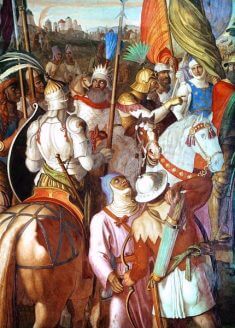
The exoticism of the Saracen army is stressed in this detail from The Saracen Army outside Paris, by Julius Schnorr von Carolsfeld, painted 1822–27, which actually depicts a fictional incident from Ludovico Ariosto (Cassino Massimo, Rome).
The Battle of Tours in 732 AD marks a pivotal moment in European history, where Charles Martel’s Frankish army successfully halted the expansion of Muslim forces into France. This decisive battle not only secured Frankish dominance in Western Europe but also prevented further Muslim conquests into the heart of the continent. Understanding the context, events, and significance of this confrontation provides valuable insights into medieval Europe’s socio-political dynamics and the clash of civilizations.
The Rise of Islam and Muslim Expansion
The rise of Islam in the 7th century marks one of the most profound transformations in world history, reshaping the religious, cultural, and political landscapes of a vast swath of the globe. Beginning with the teachings and leadership of Prophet Muhammad in the Arabian Peninsula, Islam rapidly spread through the efforts of his followers and successors, fundamentally altering the course of history.
After the death of Prophet Muhammad in 632 CE, the Islamic community, or Ummah, continued to expand under the guidance of the Rashidun Caliphs—Abu Bakr, Umar, Uthman, and Ali. These leaders, close companions of Muhammad, pursued a series of military campaigns that extended the influence of Islam well beyond the Arabian Peninsula. Their conquests included major territories in the Byzantine and Persian empires, showcasing not only military prowess but also a compelling new religious message that attracted diverse peoples.
The Umayyad Caliphate, which succeeded the Rashidun Caliphate in 661 CE, further accelerated the expansion of Islam. Under the Umayyads, the Islamic empire grew to encompass vast regions, stretching from the Iberian Peninsula in the west to the Indus River in the east. This remarkable expansion was driven by a combination of military conquests, strategic diplomacy, and the appealing nature of Islamic principles.
By the early 8th century, the Umayyad forces, under the command of Abdul Rahman Al Ghafiqi, had established a strong foothold in the Iberian Peninsula (modern-day Spain and Portugal). The ambition of the Umayyad Caliphate then turned towards the Frankish Kingdom, a realm that presented a gateway to deeper penetration into Europe. The decisive encounter between the Muslim forces and the Frankish kingdom came in 732 CE, at the Battle of Tours (also known as the Battle of Poitiers), where the Frankish forces led by Charles Martel confronted the advancing Umayyad army.
The confrontation at Tours was pivotal, not only as a military engagement but also as a moment of significant cultural and historical consequence. Charles Martel’s victory over Abdul Rahman Al Ghafiqi’s forces is often cited as a turning point that checked the northward expansion of Islam into Europe, establishing a boundary between the Islamic world and Christian Europe that would persist for centuries.
The rapid expansion of Islam during this period was not merely a series of military campaigns but also a profound cultural and religious movement. The territories under Islamic rule witnessed a remarkable period of intellectual, scientific, and cultural flourishing. Islamic scholars preserved and expanded upon the knowledge of the ancient world, making significant contributions in fields such as mathematics, astronomy, medicine, and philosophy. The exchange of ideas and cultures facilitated by the Islamic empire’s expansion had a lasting impact on the development of world civilization.
The Frankish Kingdom and Charles Martel
In the tapestry of medieval European history, the Frankish Kingdom stands out as a beacon of strength and resilience during a period marked by turmoil and the fragmentation of power. By the 8th century, this realm had emerged as a formidable power in what is now modern-day France, wielding significant influence over the surrounding territories. At the heart of the Frankish Kingdom’s ascendancy was Charles Martel, a figure whose leadership and military genius left an indelible mark on the course of Western history.
Charles Martel, born into the Carolingian line, was not initially destined to wield the power he eventually came to hold. However, through a combination of ambition, political savvy, and military skill, he rose to prominence, becoming the Mayor of the Palace—a position that, under his stewardship, became the de facto power behind the throne of the Merovingian kings, who had become largely figurehead rulers by this time.
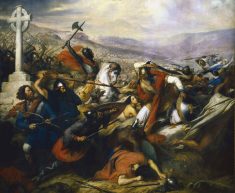
Charles Martel in the Battle of Tours
Martel’s reign was characterized by a series of military campaigns that not only expanded the boundaries of the Frankish Kingdom but also secured its borders against a variety of threats. He is perhaps best remembered for his role in the Battle of Tours (732 CE), where his leadership and strategic foresight were pivotal in halting the northward expansion of the Umayyad Caliphate into Europe. This victory is often cited as a turning point in European history, one that preserved Christianity as the dominant religion in Europe and prevented the Islamic conquest of the continent.
Beyond his military achievements, Charles Martel was a shrewd statesman who worked tirelessly to consolidate his power and ensure the stability of his realm. He reorganized the Frankish armies, introducing innovations such as the heavy cavalry, which would become a cornerstone of medieval warfare in Europe. Martel’s reforms extended to the administration of the kingdom, where he took steps to centralize authority and ensure the loyalty of the nobility through the strategic distribution of land and titles.
Martel’s efforts to fortify the Frankish Kingdom laid the groundwork for the Carolingian Empire, which would come to dominate Western Europe under the rule of his grandson, Charlemagne. Thus, Charles Martel’s legacy is not only that of a military leader who defended Europe against external invasion but also as a foundational figure in the formation of medieval European Christendom. His policies and reforms helped to shape the political and social structures of Europe, influencing the development of feudalism and laying the groundwork for the rise of the modern state.
The Prelude to Battle
In the year 732 AD, a critical moment unfolded that would significantly influence the historical trajectory of Europe and the Islamic world. The Umayyad Caliphate, at the zenith of its power and expansion, pushed its frontiers into the heart of Europe. Under the command of Abdul Rahman Al Ghafiqi, a seasoned and formidable general, the Muslim forces crossed the Pyrenees, venturing into Aquitaine, a region rich in resources and strategic importance, located in what is now southwestern France.
The Umayyad army, buoyed by a series of successful campaigns across the Iberian Peninsula and beyond, embarked on a sweeping campaign across Aquitaine. Their approach was both methodical and devastating—cities were besieged, and the countryside was laid to waste as they advanced. The objective was clear: to extend the dominion of the Umayyad Caliphate, securing valuable territories and further spreading the influence of Islam.
As news of the Umayyad advance spread, it sowed seeds of panic and desperation among the Christian realms of Europe. The gravity of the threat became palpable, compelling local leaders to seek aid against an adversary whose reputation for military prowess preceded them. It was during this tumultuous period that a call for assistance reached Charles Martel, a leader whose military acumen and authority were recognized across the Frankish Kingdom.
Recognizing the existential threat posed by the Umayyad invasion, Charles Martel acted with characteristic decisiveness and urgency. He swiftly mustered a force comprising Frankish warriors and allies, leveraging his considerable influence and the formidable military infrastructure he had established. Martel’s response was not merely a defensive maneuver but a strategic counter to the advancing Umayyad forces. Understanding the stakes, he prepared his forces for a confrontation that would determine the fate of Christian Europe.
The prelude to the Battle of Tours (or Poitiers) was marked by strategic positioning and maneuvering. Charles Martel’s forces marched southward, moving with purpose toward the invading army. Martel’s leadership and the disciplined might of his assembled warriors set the stage for a clash of civilizations. The impending battle was more than a military engagement; it symbolized the confrontation between two worlds, two faiths, and two vastly different visions for the future of Europe.
Thus, as the Frankish forces approached the site of the imminent battle, the stage was set for a confrontation that would echo through the ages. The events that unfolded near Tours in 732 AD would not only decide the outcome of this particular invasion but also shape the cultural, religious, and geopolitical contours of the medieval world.
The Battle of Tours
The Battle of Tours, also known as the Battle of Poitiers, remains one of the most pivotal clashes in the annals of European history. While the precise location of the battle is subject to historical debate, consensus leans towards a site near the city of Tours, in the heartland of Frankish territories. This confrontation saw the well-disciplined and heavily armored Frankish forces under Charles Martel square off against the formidable Muslim cavalry, led by Abdul Rahman Al Ghafiqi, whose prowess in swift maneuverability and archery had been demonstrated in numerous victories across the Iberian Peninsula and beyond.
Despite the numerical disadvantage faced by the Frankish army, Charles Martel’s strategic acumen was evident in the deployment of his troops. He meticulously organized his soldiers into a phalanx-like formation, creating a formidable shield wall that served as both a defensive bulwark and a platform for counter-attacks. This formation was crucial, leveraging the Frankish forces’ heavy armor and close-combat capabilities to offset the mobility and ranged tactics of their adversaries.
The Muslim cavalry, renowned for their hit-and-run tactics and effective use of the bow from horseback, encountered a resilient and unyielding opponent. The Frankish shield wall, a testament to Martel’s understanding of his enemy’s strengths and weaknesses, proved to be an effective countermeasure. It absorbed the impact of the cavalry charges and the barrages of arrows, preserving the cohesion and fighting spirit of the Frankish forces.
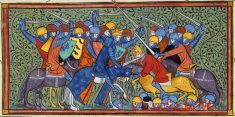
Charles Martel at the Battle of Tours, depicted in the Grandes Chroniques de France
As the battle raged, the dynamics of the engagement highlighted the contrasting military doctrines and equipment of the two armies. The Frankish reliance on heavy infantry, supported by their own cavalry elements, contrasted sharply with the Umayyad strategy that favored the mobility and versatility of their horsemen. This clash of tactics and arms underscored the broader cultural and technological divergences between the Islamic and Christian worlds at this juncture in history.
Charles Martel’s leadership and tactical decisions during the battle played a decisive role in the outcome. His ability to maintain the discipline and morale of his troops, even when faced with the prospect of being outnumbered and outmaneuvered, was instrumental in the Frankish victory. The steadfastness of the Frankish forces, anchored by their shield wall, eventually turned the tide of the battle. The death of Abdul Rahman Al Ghafiqi during the conflict dealt a critical blow to the Muslim forces, sapping their momentum and leading to their eventual withdrawal.
The Battle of Tours did not just halt the northward expansion of the Umayyad Caliphate into Europe; it also cemented Charles Martel’s reputation as a military leader of the highest caliber. The victory ensured the survival of the Frankish realm and preserved Christian dominance in Western Europe, shaping the religious and cultural landscape of the continent for centuries to come. The battle’s legacy endures, symbolizing the clash between two worlds and serving as a testament to the strategic and tactical ingenuity of Charles Martel.
The Turning Point
The pivotal moment of the battle arrived amidst the chaos of the clash between the Frankish and Umayyad forces. The disciplined defense of the Frankish infantry, bolstered by their stalwart resolve and strategic positioning, proved to be an insurmountable obstacle for the charging Muslim warriors. Charles Martel, the seasoned commander of the Frankish forces, orchestrated devastating counterattacks with his cavalry, exploiting gaps in the Umayyad lines and inflicting heavy casualties upon their ranks.
However, it was not solely the prowess of the Frankish fighters that turned the tide of battle, but a stroke of fortune and cunning. Amidst the din of combat and the dust of the battlefield, rumors began to circulate among the Umayyad ranks, whispers of untold riches awaiting them at the Frankish plundering camp. Greed and the allure of plunder seized the hearts of a significant portion of the Muslim army, sowing discord and disarray within their ranks.
As the rumors spread like wildfire, a portion of the Umayyad forces broke ranks, abandoning the battlefield in a reckless pursuit of wealth and spoils. The once-united front of the Muslim army fragmented, leaving gaps in their lines and exposing their flanks to devastating Frankish assaults. Confusion and chaos reigned as the retreating soldiers clashed with their comrades who remained steadfast in the face of adversity.
This moment of opportunism and division proved to be the turning point of the battle. With the Umayyad forces in disarray and their morale shattered, the Frankish infantry and cavalry capitalized on the opportunity, pressing their advantage with renewed vigor and determination. Their coordinated attacks grew ever more ferocious, driving the wavering Muslim ranks further into disarray and despair.
Ultimately, it was this decisive moment, fueled by greed, confusion, and the unwavering resolve of the Frankish defenders, that secured victory for Charles Martel and his forces. The Battle of Tours would go down in history as a watershed moment, not only halting the advance of the Umayyad Caliphate into Western Europe but also shaping the course of medieval history and the trajectory of civilizations for centuries to come.
The Aftermath and Legacy
The aftermath of the Battle of Tours reverberated throughout Europe, leaving a profound impact on the political, religious, and cultural landscape of the continent. Charles Martel’s decisive victory over the Umayyad forces under Abdul Rahman Al Ghafiqi not only saved the Frankish Kingdom from Muslim conquest but also altered the course of European history in significant ways.
First and foremost, the Battle of Tours marked a crucial turning point in the expansion of Islam into Europe. The defeat of the Umayyad Caliphate’s advance into Frankish territory halted the momentum of Muslim conquests beyond the Iberian Peninsula. The Franks’ triumph bolstered Christian resistance to further Islamic encroachment, preserving the Christian identity and dominance of Western Europe.
The preservation of Christianity’s dominance in the region had far-reaching consequences for European civilization. It allowed for the consolidation and expansion of Christian political power, laying the groundwork for the emergence of the Holy Roman Empire and other Christian kingdoms that would shape the medieval and early modern periods. The Battle of Tours thus played a pivotal role in shaping the religious and political boundaries of Europe for centuries to come.
Moreover, Charles Martel’s leadership during the battle solidified his reputation as a formidable military strategist and a defender of Christendom. His title, “the Hammer of the Franks,” became synonymous with courage, resilience, and tactical acumen. Martel’s legacy endured long after his death, inspiring future generations of European leaders and shaping the development of feudal society and medieval warfare.
The Battle of Tours also symbolized the clash of civilizations between Christianity and Islam, a theme that would echo throughout European history. It fueled the perception of Islam as a perennial threat to Christian Europe, contributing to the development of the Crusades and shaping European attitudes towards the Islamic world in subsequent centuries.
Newest Additions
- The Beheading of John the Baptist
- Jesus Sends Out His Twelve Apostles
- The Miracle of Healing: Jesus and the Paralytic
- Parables of Wisdom: The Teachings of Jesus
- Jesus’ Response to John’s Disciples
Copyright © 2020 · Totallyhistory.com · All Rights Reserved. | Terms of Use | Privacy Policy | Contact Us

The Battle of Tours
Subscribe Apple | Spotify | Amazon | Player.FM | TuneIn Castbox | Podurama | Podcast Republic | RSS | Patreon
Podcast Transcript
In the year 732, one of the most important battles in world history took place between the cities of Tours and Portier in France.
On one side was an unstoppable juggernaut that had amassed one of the largest empires in world history in less than a century.
On the other side was a vastly outnumbered force that lacked the primary weapon of the era, heavy cavalry.
The outcome of that battle can still be seen in the world today.
Learn more about the Batte of Tours and the battle that shaped Europe on this episode of Everything Everywhere Daily.
A while ago, I did an episode on the most important battles in history. These weren’t the biggest battles or the battles where a general showed the greatest brilliance, but the battles whose outcome managed to shape world history.
These battles were civilizational battles. Battles between different cultures and empires, not just squabbles between neighboring kings or dukes over who will collect taxes on a piece of land.
Several of these battles had to do with the rise of Islam.
After the death of the Prophet Mohammed in 632, Islam spread out from the Arabian peninsula like wildfire. To say that Islam was seemingly unstoppable is not an exaggeration.
In a previous episode, I covered the accomplishments of Khalid Ibn al-Walid, one of the greatest generals in history. As far as we know, he was undefeated on the battlefield and was responsible for much of the early spread of Islam.
The Rashidun Caliphate was the first Islamic state after the death of Mohammed, and within 30 years, it spread to conquer the Arabian Peninsula, much of modern Iran, the Levant, and the northeast coast of Africa.
It was during the Rashidun Caliphate that another one of the great battles in history took place, the Battle of Yarmouk, in 636. I covered the Battle of Yarmouk in a previous episode, but basically, the forces of Islam defeated the Byzantine Empire, which was actually the remnants of the Roman Empire in the east.
Having defeated the Byzantines, it ensured that Mesopotamia, Egypt, and the Levant would be Muslim and not Christian, a state of affairs that still exists today.
The Rashidun Caliphate was replaced by the Umayyad Caliphate in 661. While the leadership of the Islamic world changed, their success in expansion continued.
For the purpose of this episode, focusing on their westward expansion, the Umayyad Caliphate spread across the entirety of North Africa, crossed the Strait of Gibraltar, and began the conquest of the Iberian Peninsula.
On April 30, 711, General Tariq ibn-Ziyad led Moorish forces across the Mediterranean and landed in Gibraltar.
In Iberia, they conquered the Visigoth people who had settled in the peninsula after the collapse of the Western Roman Empire. The entire area was called Al Andalus in Arabic.
I’ve covered Al Andalus and the Reconquista, which took place 700 years later in previous episodes.
The relevant point for this episode is that the Umayyad Caliphate didn’t stop at the Iberian Peninsula.
By the early 8th century, there was a major concern throughout Europe that the continent would fall to Islam. Having conquered the Iberian Peninsula, forces of the Caliphate began conducting raids beyond the Pyrenees mountains into what is today modern-day France.
In their initial forays into France, they found almost no resistance.
In 720, the governor of Al Andalus, Al-Samh ibn Malik, established a foothold in what is today the city of Narbonne on the Mediterranean coast.
From there, they used it as a base to begin raiding into southern France on the other side of the Pyrenees.
However, on the other side of the Pyrenees, they didn’t see the same success that they did on the other side.
In 721, at the Battle of Toulouse, the Umayyad forces were defeated by Duke Odo of Aquitaine, and during the battle, ibn Malik was killed.
This was a setback, but it didn’t stop the ambitions of the caliphate. For the next several years, they conducted raids out of Narbonne, going as far as Burgundy in 725.
By 732, the Umayyads had assembled a significant force led by the new governor of Al-Andalus, Abdul Rahman Al Ghafiqi, and they advanced into the Aquitaine.
There, they met Duke Odo again at the Battle of the River Garonne, where this time they decisively defeated Odo.
Odo fled north to seek help from Charles Martel. Martel held the title of Mayor of the Palace to the Merovingian kings of the Franks. He was basically the person who ran the kingdom but wasn’t the leader in title. The name “Martel” was an Old French word for “hammer.”
Martel and Odo had been rivals, and Martel offered his support to Odo on the condition that Odo pledged fealty to the Franks, which he agreed to.
Martel had been aware of the Islamic threat for years and believed that to counter them, which he knew would eventually happen, he would need a professional, well-trained army, not an army of farmer conscripts. In particular, he needed to counter the vaunted Islamic cavalry.
He established just such a professional army that had experience fighting in wars in Saxony, witsome men having been under his command for almost 20 years.
Knowing that Abdul Rahman was on the move, Martel assembled his army of approximately 30,000 men and set out to meet the Umayyad forces.
In order to keep the element of surprise, Martel had his army travel by side roads, and he also made sure to position himself so he could select the field of battle that would be advantageous to him.
He selected a place between the towns of Tours and Poitiers. I should note that, as with many battles from antiquity, we don’t know exactly where it took place. We only know that the battle took place somewhere between Tours and Poitiers, which are about 90 kilometers apart from each other.
We also know, based on historical accounts, that the site he selected was a high, wooded plain that required Abdul Rahman’s forces to attack uphill, with trees in the way. This landscape would take away much of the advantage of the Umayyads’ cavalry.
Abdul Rahman was indeed taken by surprise and had no idea that there would be a large force blocking him from raiding Tours, which was a very wealthy city.
He had the numerical advantage, and he waited for all his forces to arrive while engaging in skirmishing with the Franks.
When Abdul Rahman’s troops began to arrive, they had difficulties with the climate. Abdul Rahman and his men were used to the warmer temperatures of Al Andalus and North Africa. It was now October in France, and temperatures were starting to drop.
After seven days of skirmishing, the Muslim forces assembled and began the attack. We do not know the exact date that the battle took place. It is believed that the Franks had about 30,000 men, and the Umayyads had about 80,000. However, Abdul Rahman had no idea the size of the Frankish force because they were mostly hidden by trees.
Martel had no heavy cavalry of his own, which was very unusual for this time period. Heavy cavalry were the tanks of that age and were a key component to almost every military conflict.
Martel had his men heavily armed and formed themselves into squares, similar to how ancient Greek troops would form a phalanx.
The Umayyads threw wave after wave of cavalry at the Franks, who managed to repel them each time due to the advantage of the terrain, their formation, and the experience of their soldiers. Another factor was the fact that the Islamic cavalry was lightly armored, which made them more susceptible to infantry. The Umayyad horsemen would take their plunder from attacks and buy jewels and trinkets, not heavy armor. Their weapons were usually spears that would break on first contact, and their armor was usually just a chainmail shirt.
Eventually, the Umayyads did break through the Frankish lines and attempted to attack Martel directly, but his personal guard managed to repulse the attack.
What eventually swayed the battle was a flanking maneuver that Duke Odo conducted. He took a Frankish cavalry force, swung wide around the Umayyad army, and attacked the Umayyad camp.
All of the booty and plunder that the Umayyad army had collected was back at their camp, and that was the primary reason why most of the men were there. Many of them had traveled with their wives and families as well who were still at camp.
A large part of the Umayyad army broke formations to retreat and defend their camp, which caused their lines to fall apart.
As the Umayyad forces retreated to their camp, Abdul Rahman attempted to rally his troops and reform his line. However, he was quickly surrounded and killed by the Franks.
With the leader dead, the Umayyad army retreated back to Al Andalus. Charles Martel prepared for a counterattack the next day, but it never happened.
This was not the last attempt of the caliphate to attack France, but it was by far the largest and the most serious.
In 736 and 739, there were other raids into France, but they proved just as unsuccessful. There were no serious attempts to advance beyond the Pyrenees again.
So, how did an army that had been almost unstoppable for a century suddenly fall short once it entered France?
Much of the credit goes directly to Charles Martel, who had clearly been preparing for this conflict for several years. He had a trained, experienced army who was able to defend against cavalry attacks.
Martel had the element of surprise and was able to pick the field of battle. The cold weather of October in France probably also played a part.
However, there was probably also an element of hubris amongst the Umayyad forces and leaders.
Abdul Rahman, who otherwise was considered a good leader, committed many basic errors, including letting his opponent pick where the battle was to take place.
The Umayyads had experienced so much success that they probably thought failure was simply impossible and got sloppy. The fact that so many men in their army were primarily concerned with their plundered loot was also used against them.
Ultimately, what makes the Battle of Tours still worth talking about 1300 years after it happened has to do with the implications of the battle.
Many historians see the Battle of Tours as the event which set the limits of Islamic expansion in Europe. It was as responsible for Europe remaining Christian as the Battle of Yarmouk was for the Middle East becoming Muslim.
It stopped the unstoppable force, which was the Umayyad Caliphate, and put limits on their territorial expansion, at least in the West.
The battle also had huge implications for the political alignment of Europe.
The battle cemented the power of Charles Martel. Charles was never a king, but his son Pepin was, becoming the first Frankish king in the Carolingian Dynasty, a dynasty named after Charles Martel.
Pepin’s son, Charlemagne, was named after Charles and, in 800, became the first European emperor since the fall of the Western Roman Empire over 300 years earlier. Charlemagne was the first Holy Roman Emperor, which began a line that continued until the early 19th century.
The Battle of Tours, like the Battle of Yarmouk, is seldom taught in schools today, but it should be because the outcome of the battle had such wide-ranging implications for the entire world.
If the events of October 732 had gone another way, we would be living in a very different world today.
The Executive Producer of Everything Everywhere Daily is Charles Daniel.
The associate producers are Peter Bennett and Cameron Kieffer.
Today’s review comes from an email I recently received from Jennifer in California. She writes:
I wanted to thank you for your great episode on non-Euclidean geometry from December! I teach a Euclidean and non-Euclidean geometry course at California State University Monterey Bay. Your podcast is one of the best short descriptions I have seen of how non-Euclidean geometry came to be and why we should care. I assigned it to my students this semester as a first-day discussion topic. Thanks for the great work that you do on the show!
Jennifer Clinkenbeard
Thanks, Jennifer! I can’t tell you how much it pleases me whenever I hear of teachers using my episodes in the classroom. If there are any other teachers out there who have used any of my episodes in the classroom, please let me know. I’d love to hear about it.
Remember that if you leave a review or send me a boostagram, you too can have it read on the show.

IMAGES
VIDEO
COMMENTS
The Battle of Tours, also called the Battle of Poitiers and the Battle of the Highway of the Martyrs (Arabic: معركة بلاط الشهداء, romanized: Maʿrakat Balāṭ ash-Shuhadā'), was fought on 10 October 732, and was an important battle during the Umayyad invasion of Gaul.It resulted in the victory for the Frankish and Aquitanian forces, led by Charles Martel, over the invading ...
Battle of Tours (October 732), victory won by Charles Martel, the de facto ruler of the Frankish kingdoms, over Muslim invaders from Spain. ... Although both Ṭāriq and Mūsā were recalled to the seat of the Umayyad caliphate in Damascus, ... Many of the camp followers included the families of fighting men, and, when news of the slaughter in ...
The Battle of Tours was a conflict between the Umayyad Caliphate and the Kingdom of Francia who had support from Aquitaine. The Umayyad Caliphate, based in Damascus, engaged in rapid expansions that saw their armies conquer the Iberian peninsula. The Umayyad Caliphate led by Abdul Rahman Al Ghafiqi began advancing into Duke Odo's territory of ...
The Battle of Tours (October 10, 732), often called Battle of Poitiers and also called in Arabic بلاط الشهداء (Balâṭ al-Shuhadâ') ... The Umayyad Caliphate, at the time of the Battle of Tours, was perhaps the world's foremost military power. Great expansion of the Caliphate occurred under the reign of the Umayyads.
And one of those rare, world-changing battles is the Battle of Tours - fought in 732 AD between the Christian Frankish forces and the invading Muslim Umayyad Caliphate. This fierce and destructive conflict, that shaped the future of Europe and echoed through time, was a great gamble, fought against all odds. But it remains as one of the biggest ...
The Battle of Tours was fought on 10 October 732, and was an important battle during the Umayyad invasion of Gaul. It resulted in the victory for the Frankish and Aquitanian forces, led by Charles Martel, over the invading forces of the Umayyad Caliphate, led by Abdul Rahman Al-Ghafiqi, governor of al-Andalus.
The Battle of Poitiers aka the Battle of Tours took place over roughly a week in early October of 732. The opposing sides consisted of a Frankish army led by Charles Martel (r. 718-741) against an invading Muslim army under the nominal sovereignty of the Umayyad Caliphate (c. 661-750) based in Damascus, Syria.. These two forces came together as Umayyad power sought expansion and plunder in ...
Background on the Battle of Tours In 711, the forces of the Umayyad Caliphate crossed into the Iberian Peninsula from Northern Africa and quickly began overrunning the region's Visigothic Christian kingdoms. Consolidating their position on the peninsula, they used the area as a platform for commencing raids over the Pyrenees into modern-day France.
Map of the Umayyad Caliphate in 750 AD. Image credit: Public Domain, via Wikimedia Commons ... The Battle of Tours. Once his army had gathered, he marched to the fortified city of Tours, on the border with Aquitaine, to await the Muslim advance. After three months of pillaging Aquitaine, al-Rahman obliged.
The Battle of Tours, also called the Battle of Poitiers and the Battle of the Highway of the Martyrs, was fought on 10 October 732, and was an important battle during the Umayyad invasion of Gaul. It resulted in the victory for the Frankish and Aquitanian forces, led by Charles Martel, over the invading Muslim forces of the Umayyad Caliphate, led by Abd al-Rahman al-Ghafiqi, governor of al ...
The Umayyad Caliphate or Umayyad Empire ... Hisham's reign witnessed the end of expansion in the west, following the defeat of the Arab army by the Franks at the Battle of Tours in 732. Arab expansion had already been limited following the Battle of Toulouse in 721.
There, at the Battle of Tours, or Poitiers, the Arabs were finally turned back by Charles Martel. ... Under ʿAbd al-Malik (reigned 685-705) the Umayyad caliphate reached its peak. Muslim armies overran most of Spain in the west and invaded Mukrān and Sindh in India, while in Central Asia the Khorāsānian garrisons conquered Bukhara ...
In October 732, the Battle of Tours was fought between the Muslim forces of the Umayyad Caliphate led by Abdul Rahman Al-Ghafiqi and the Frankish and Aquitanian forces under the leadership of Charles Martel. Al-Ghafiqi, who trusted in the tactical superiority of his cavalry, had them charge repeatedly throughout the day.
(Islamic Calendar) This, from the portion of the history of the Umayyad Caliphate, and the great Arab period of expansion, also translated into Spanish by Don Jose Antonio Conde, in his "Historia de la Dominacion de los Arabos en España," appears to put the importance of the Battle of Tours in macrohistorical perspective. Contemporary analysis
The Battle of Tours was fought on 10 October 732, and was an important battle during the Umayyad invasion of Gaul. It resulted in the victory for the Frankish and Aquitanian forces, led by Charles Martel, over the invading forces of the Umayyad Caliphate, led by Abdul Rahman Al-Ghafiqi, governor of al-Andalus.
The Battle of Tours did not just halt the northward expansion of the Umayyad Caliphate into Europe; it also cemented Charles Martel's reputation as a military leader of the highest caliber. The victory ensured the survival of the Frankish realm and preserved Christian dominance in Western Europe, shaping the religious and cultural landscape ...
Umayyad invasion of Gaul. 1837 painting by Charles de Steuben of the Battle of Tours (732), depicting a triumphant Charles Martel (mounted) facing Abd al-Rahman al-Ghafiqi (right). The Umayyad invasion of Gaul occurred in two phases in 719 and 732 AD. Although the Umayyads secured control of Septimania, their incursions beyond this into the ...
This paper examines the Battle of Tours/Poitiers in 732 between the Merovingian Mayor of the Palace, Charles Martel, and the Umayyad governor-general of al-Andalus in modern-day Spain, Abdul Rahman Al-Ghafiqi. Since the pivotal works of Sir Edward Gibbons were published in 1776, the battle has been seen as keeping Europe from falling completely to
🚩 Go to http://bit.ly/thld_cs_historymarche and use code HISTORYMARCHE to save 25% off today. Thanks to Curiosity Stream for sponsoring today's video. 🚩 Th...
The Iberian Peninsula was the westernmost tip of the Umayyad Caliphate of Damascus and was under the rule of the governor of Ifriqiya. ... (Mayor of the Palace at the Merovingian court) at the Battle of Tours ("Balat Al Shuhada" of Poitiers). 734 - Count Maurontus calls Umayyad forces on a military capacity into Arles, ...
The Rashidun Caliphate was replaced by the Umayyad Caliphate in 661. While the leadership of the Islamic world changed, their success in expansion continued. ... The Battle of Tours, like the Battle of Yarmouk, is seldom taught in schools today, but it should be because the outcome of the battle had such wide-ranging implications for the entire ...
481 CE - Clovis I united various germanic frankish tribes and became dominant power in Belgica (Belgium & northeast France).486 CE - Franks under Clovis defe...
Battles involving the Umayyad Caliphate. This category includes historical battles in which the Umayyad Caliphate of Damascus ( 661 - 750) participated. Please see the category guidelines for more information. For the Umayyads of Spain, please use Category:Battles involving the Emirate of Córdoba and Category:Battles involving the Caliphate ...